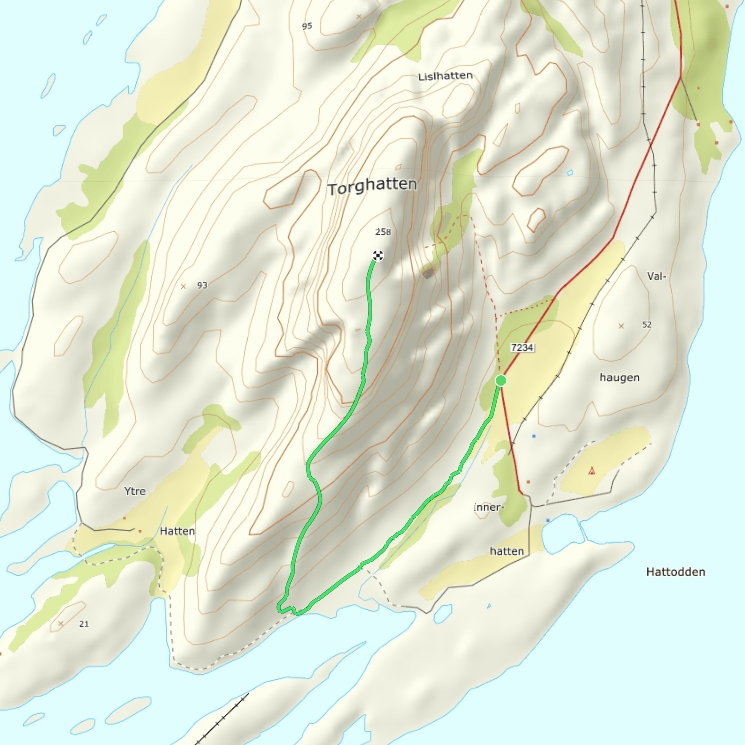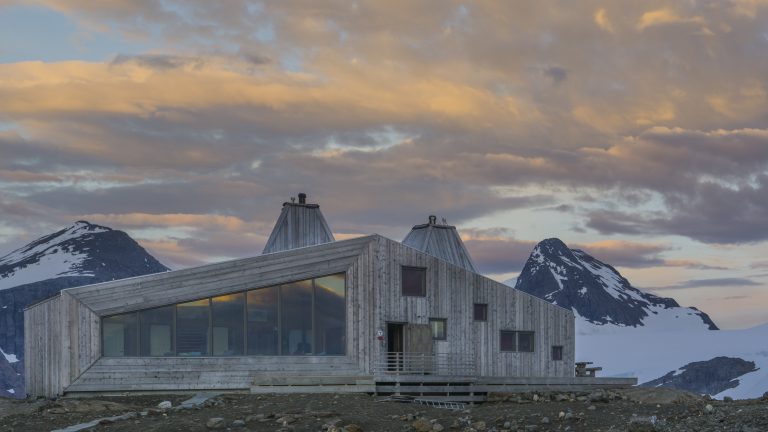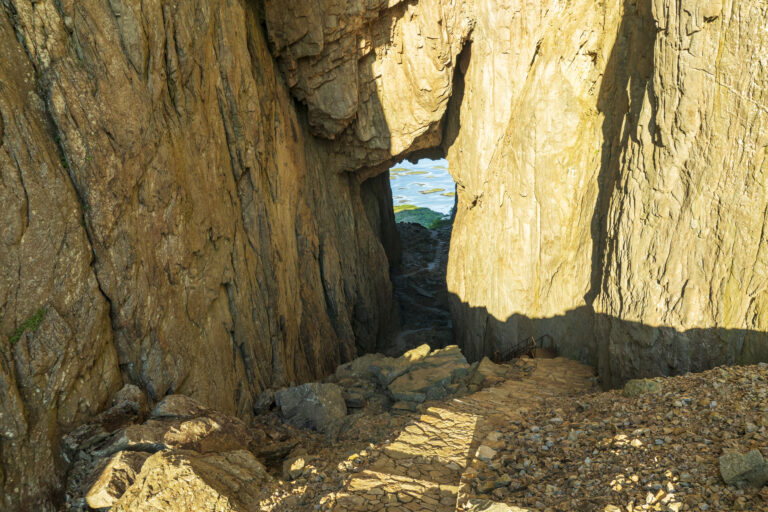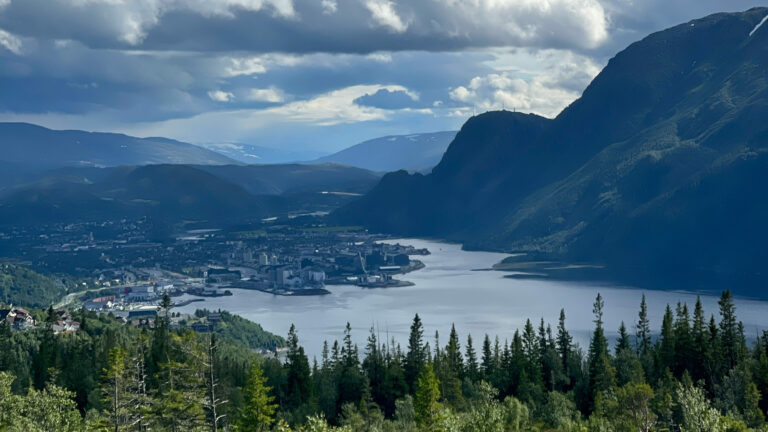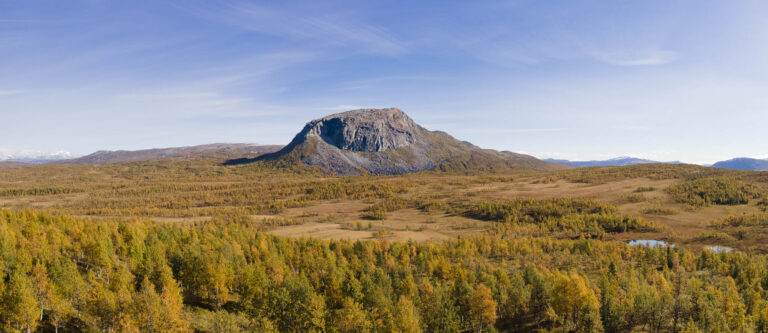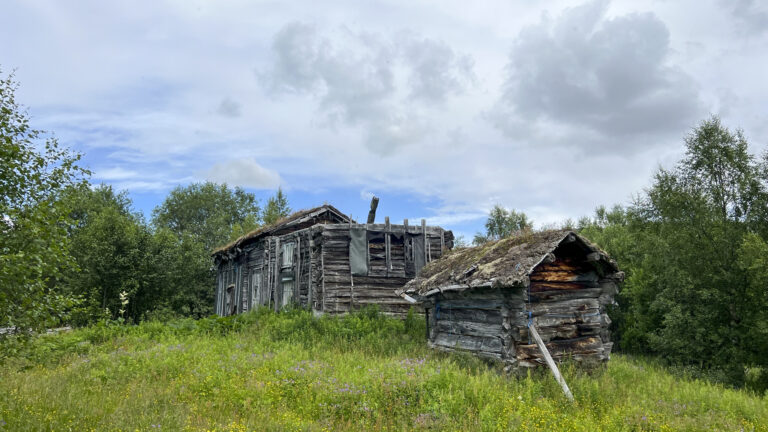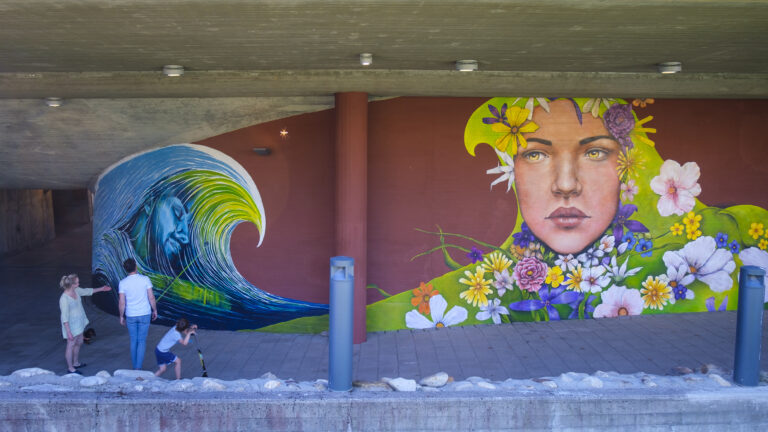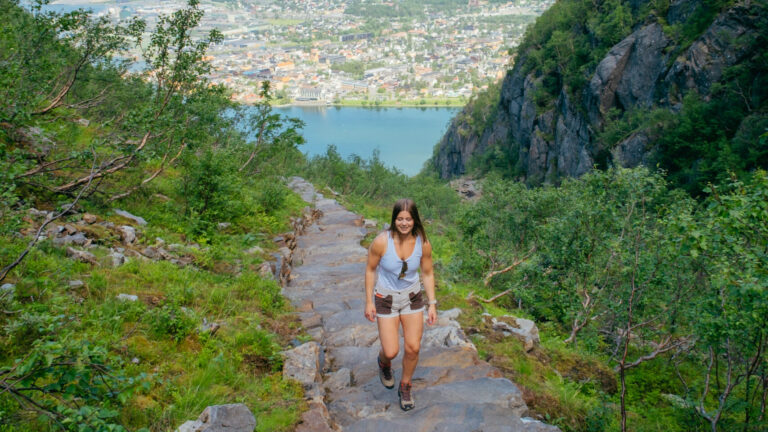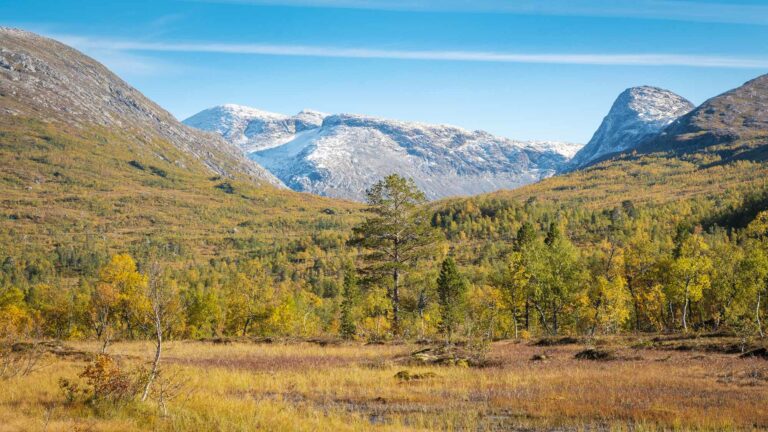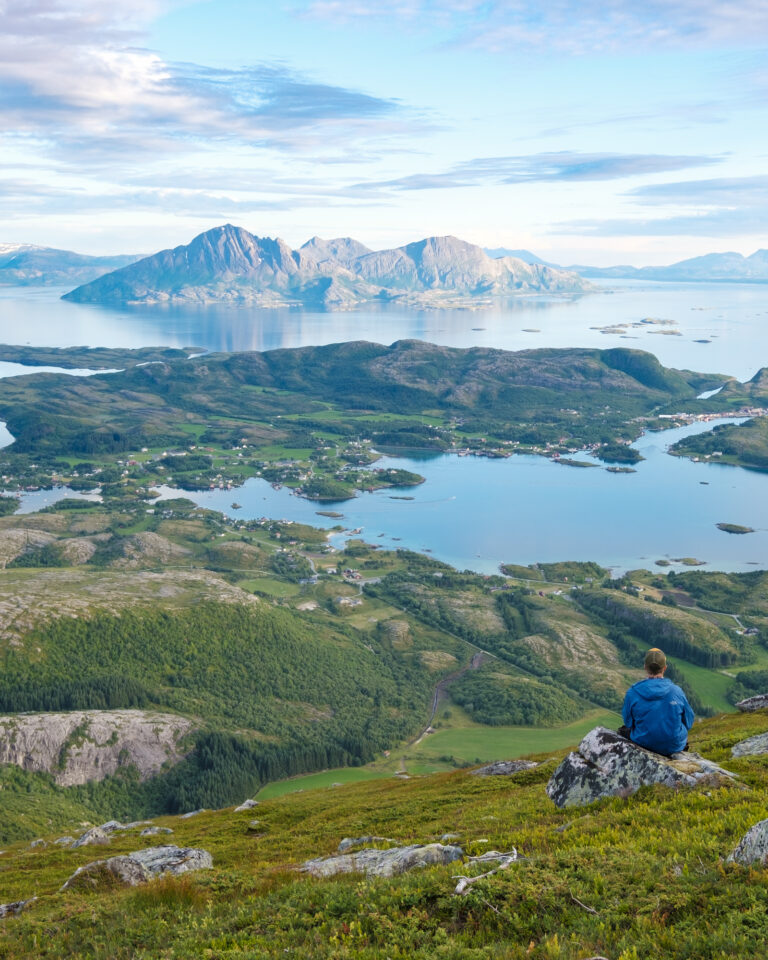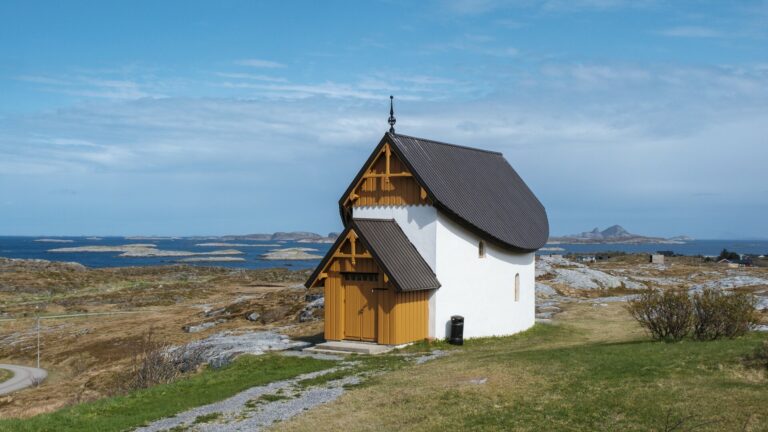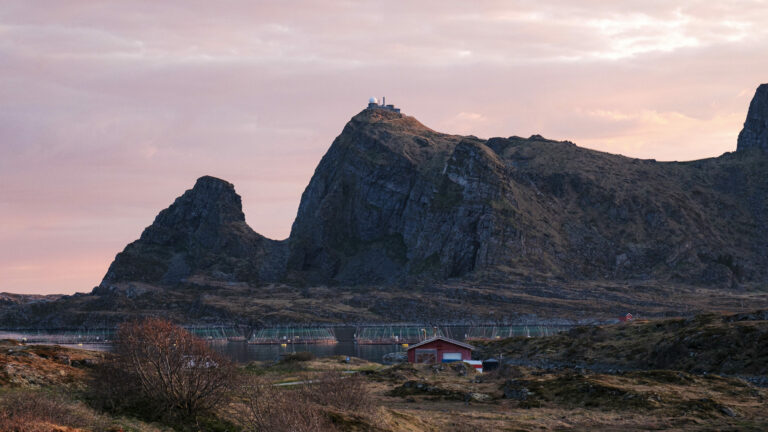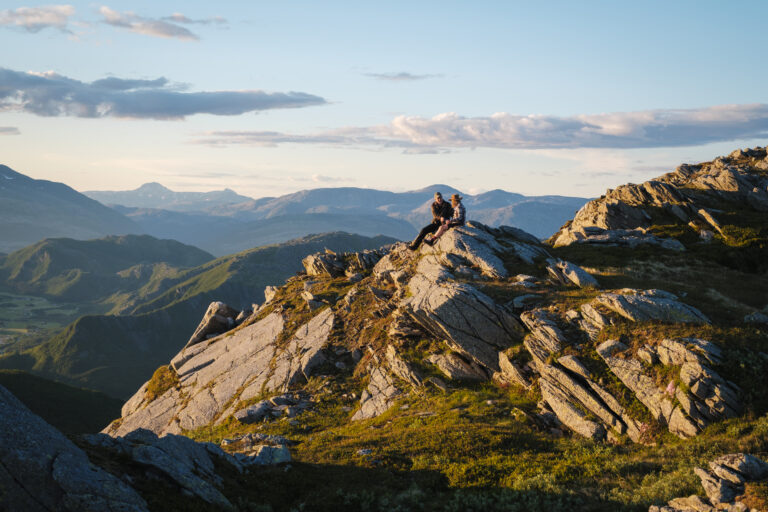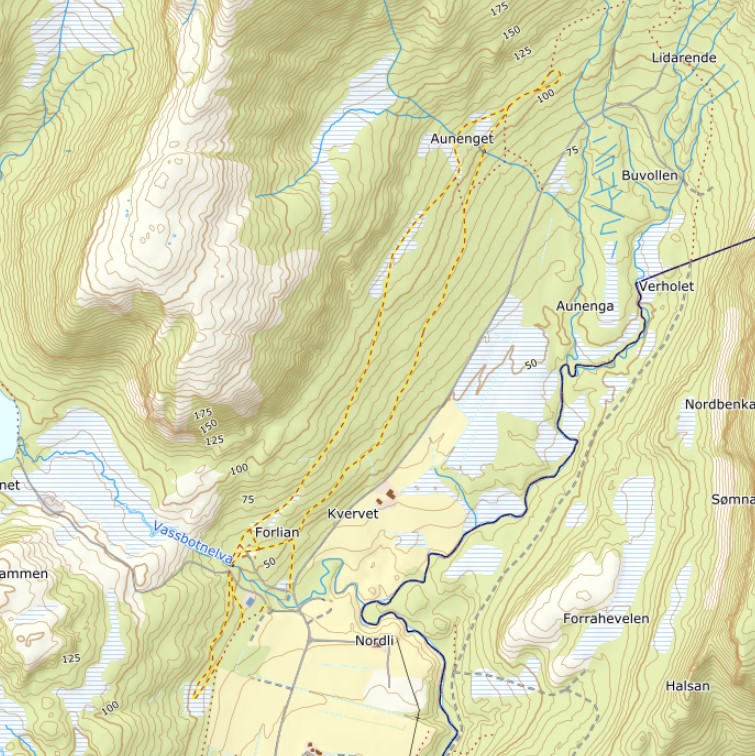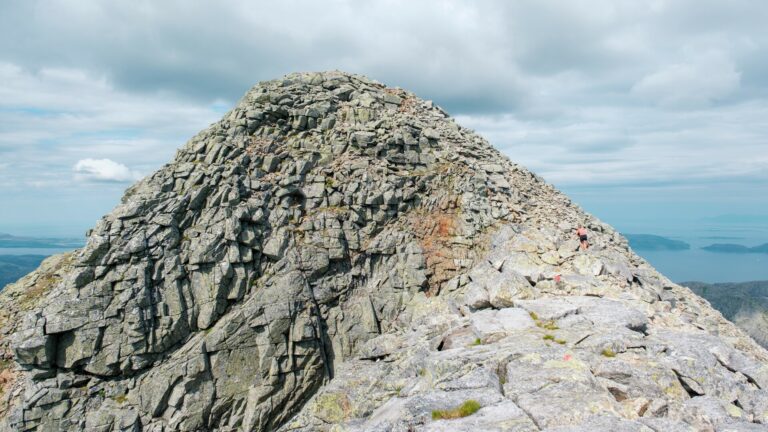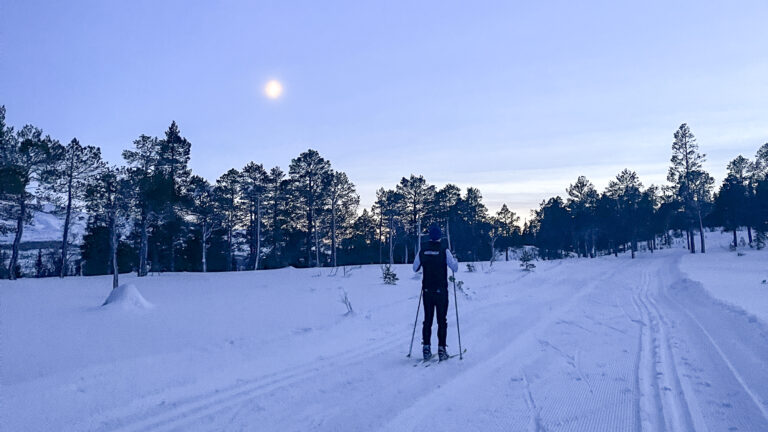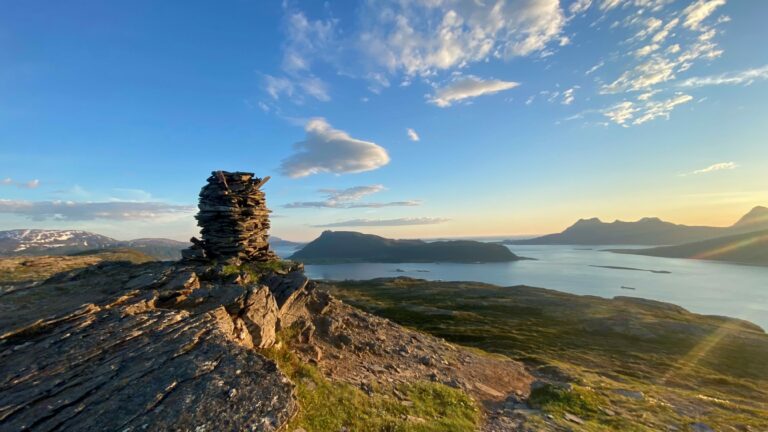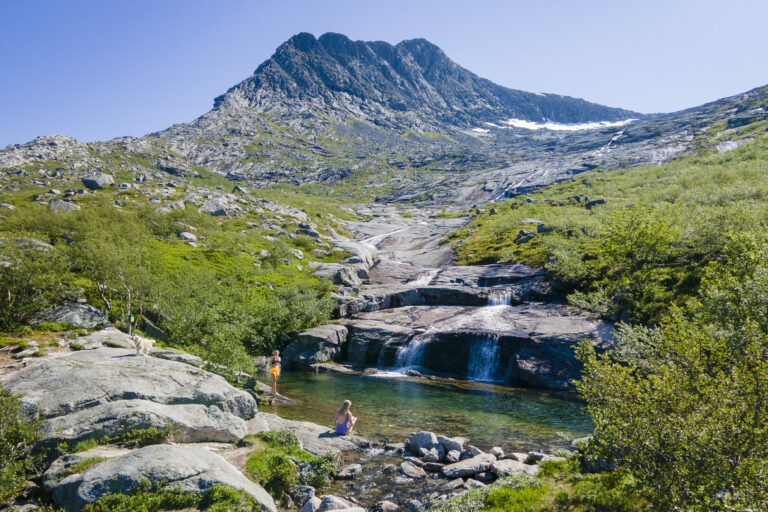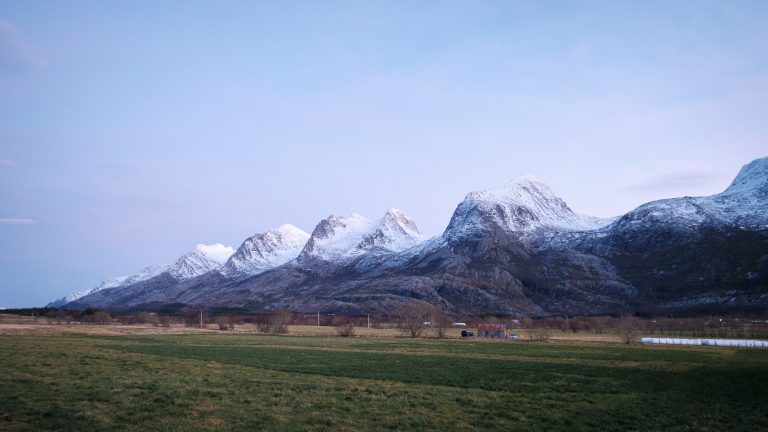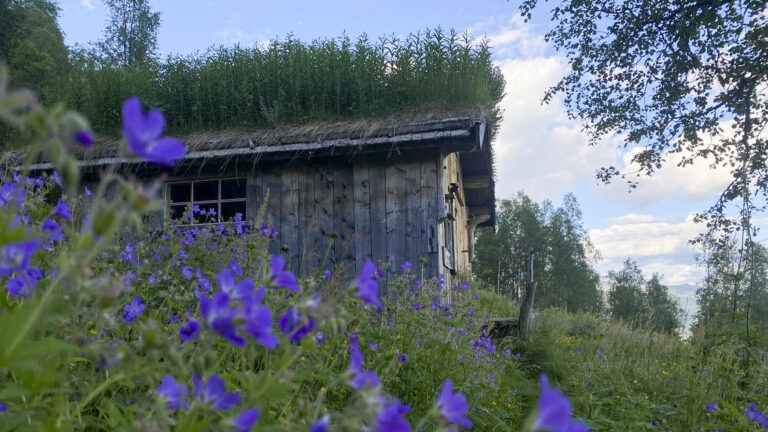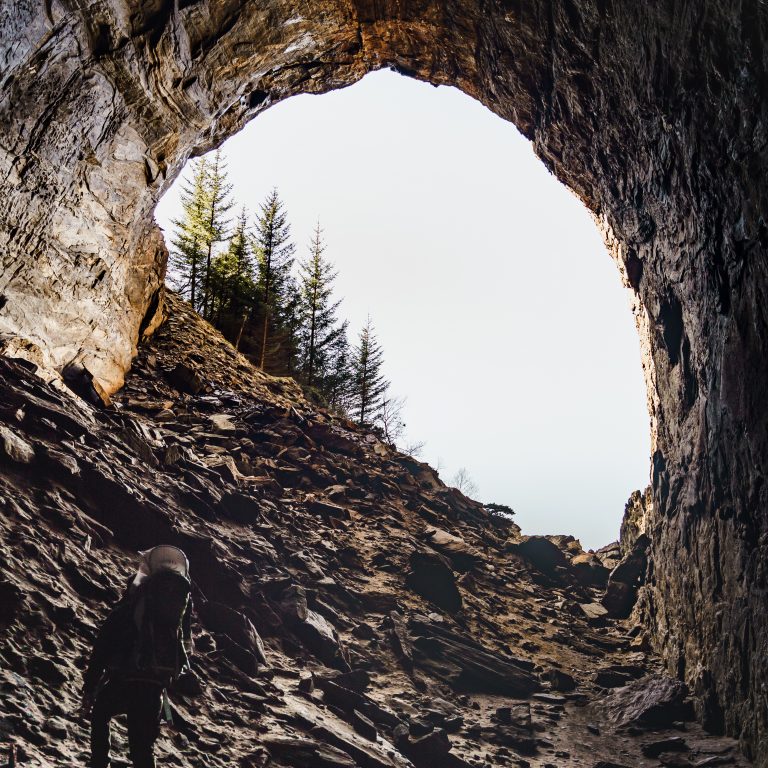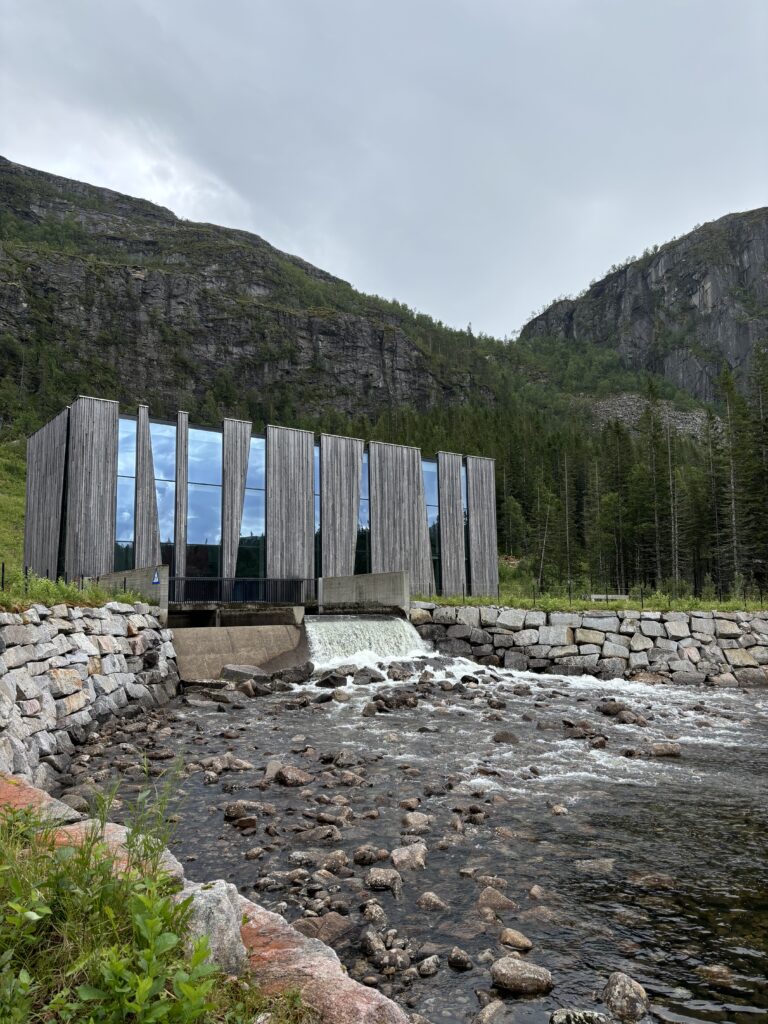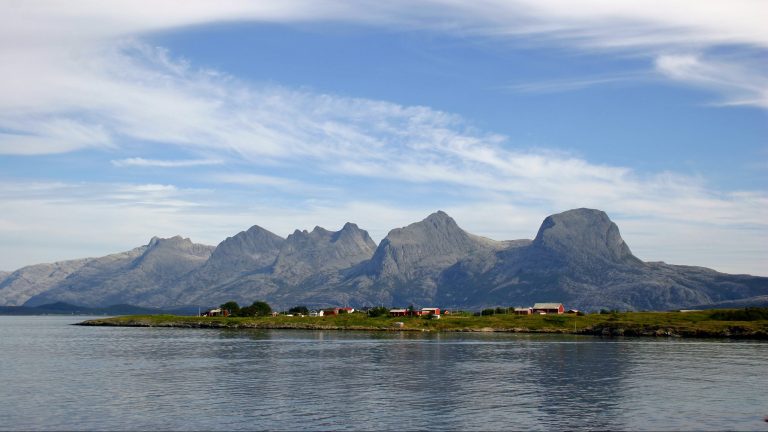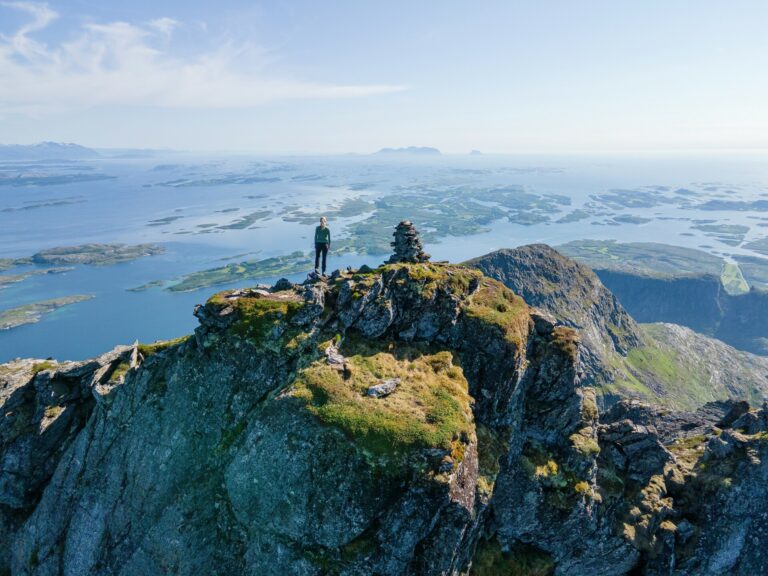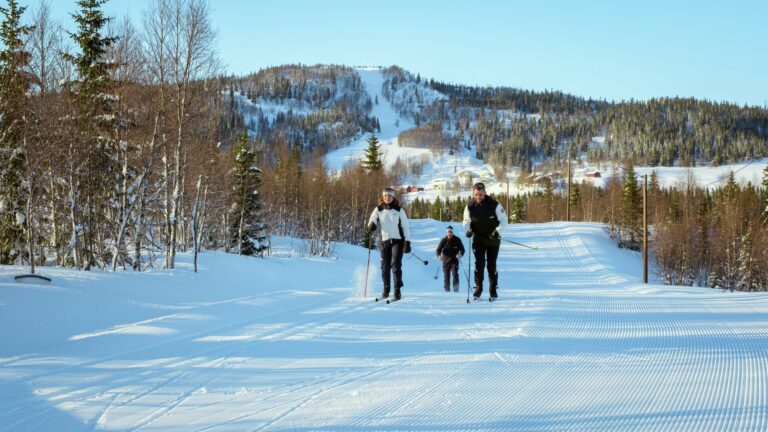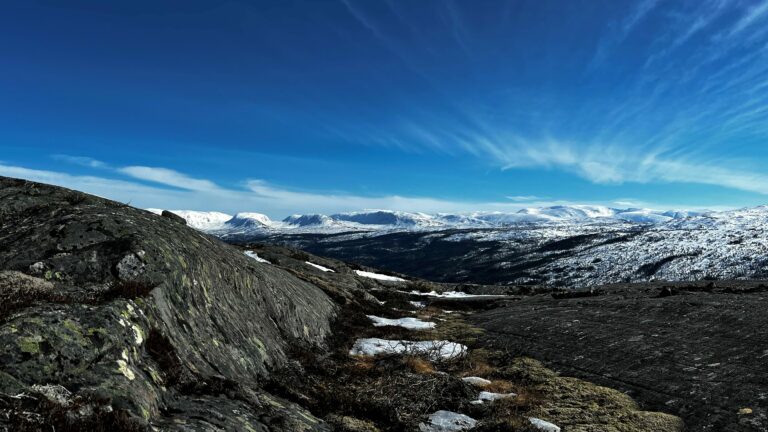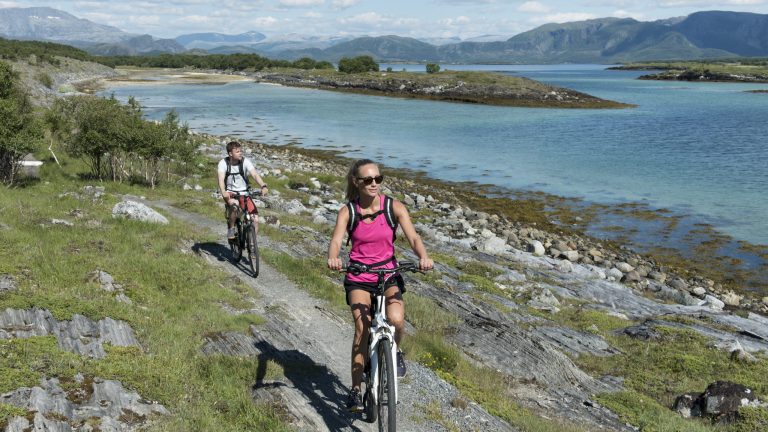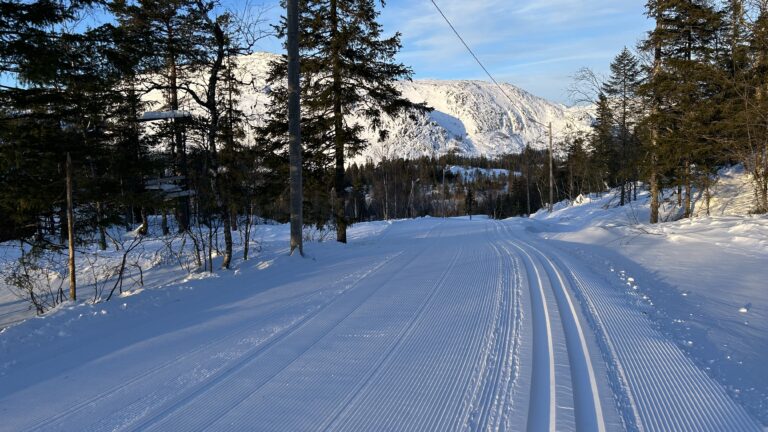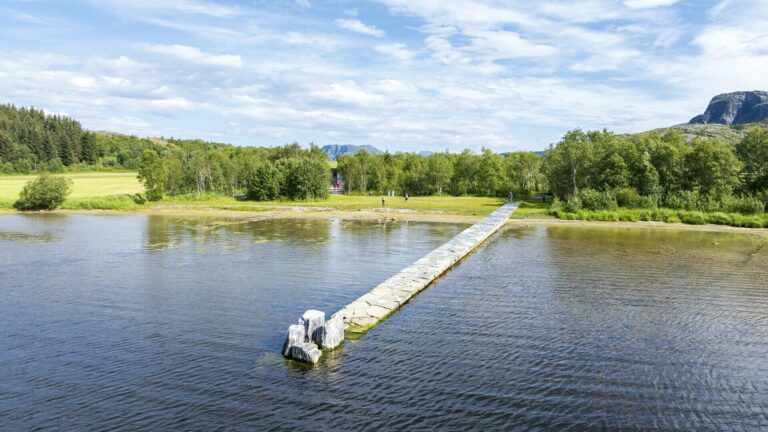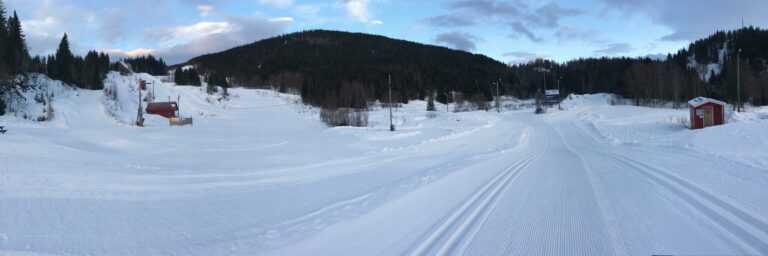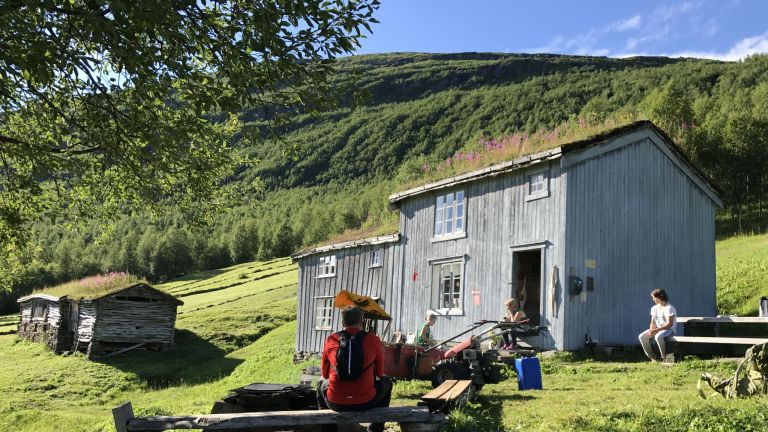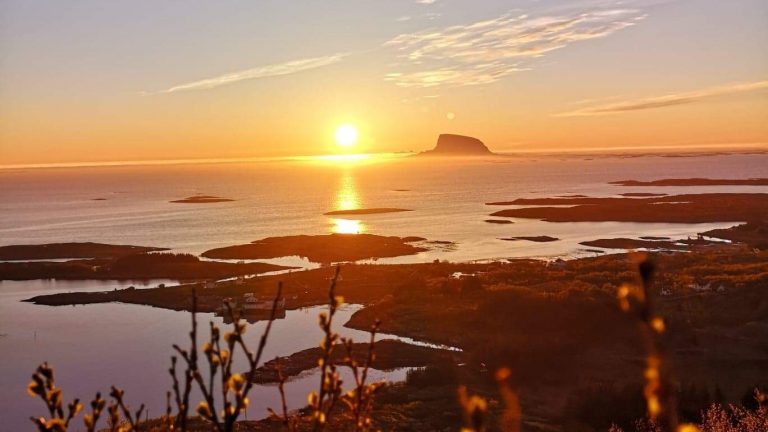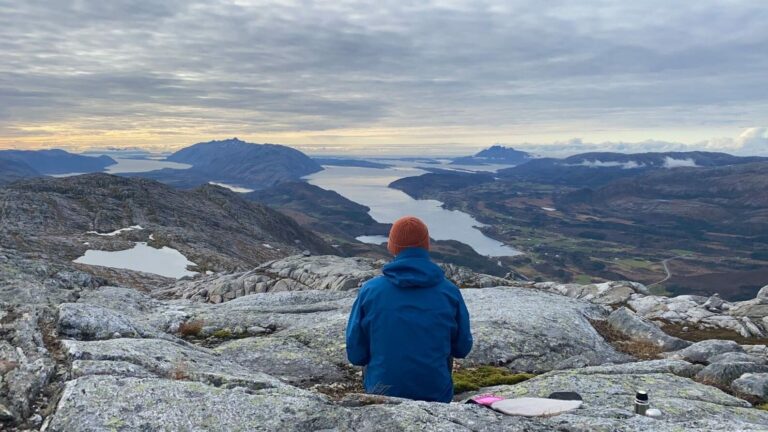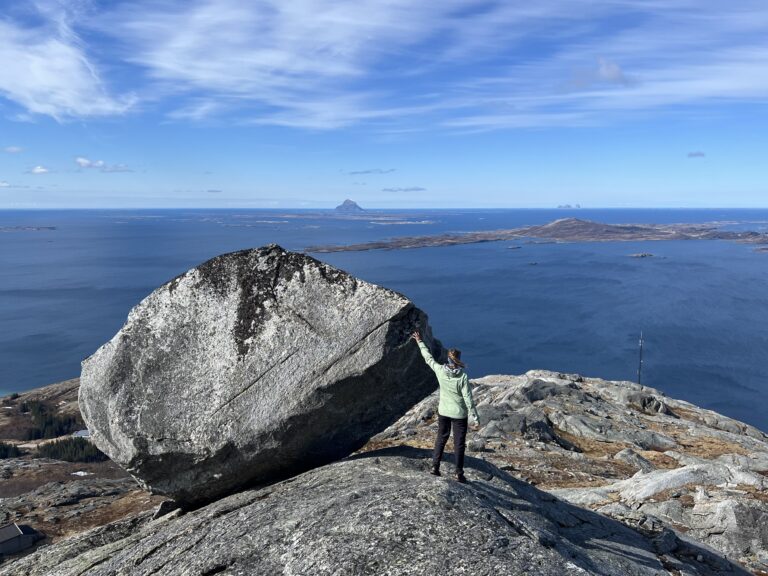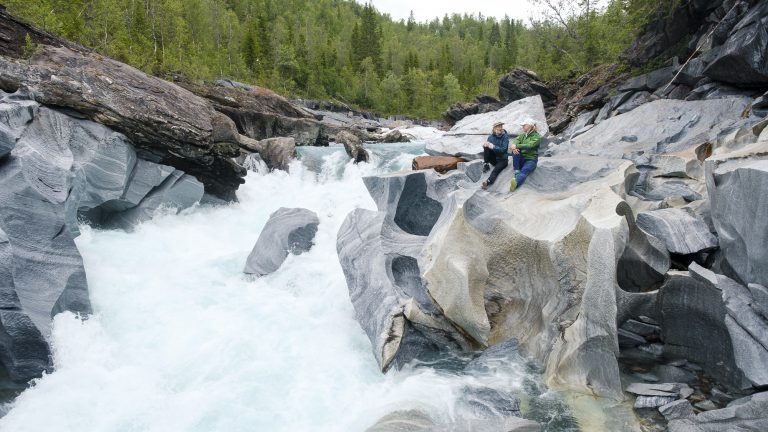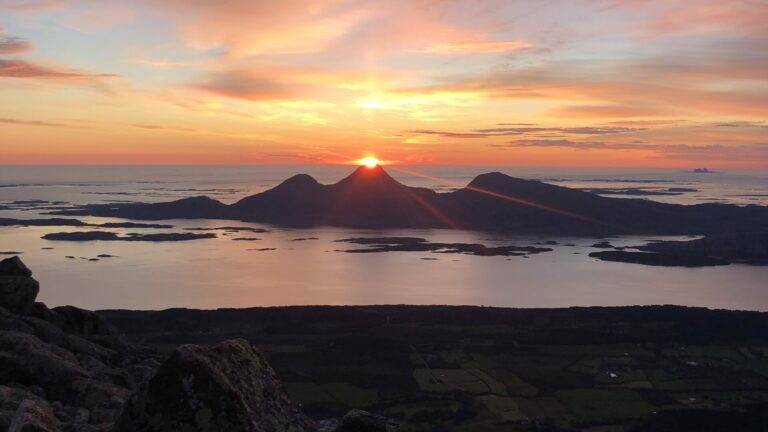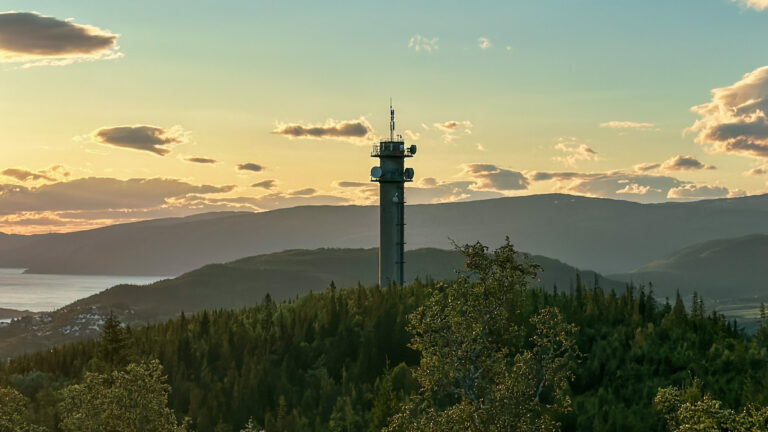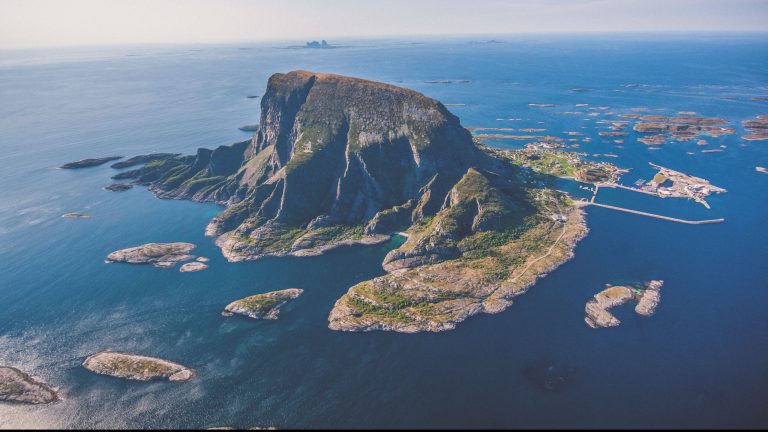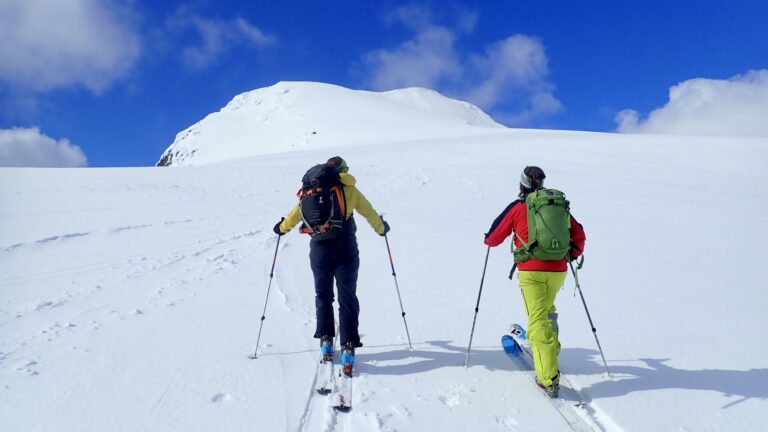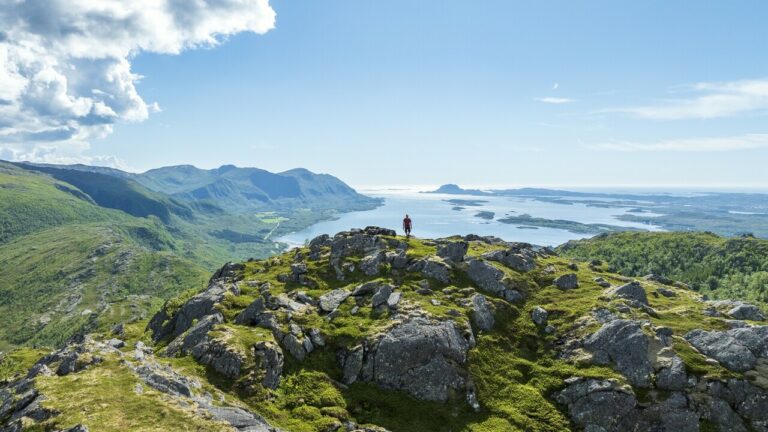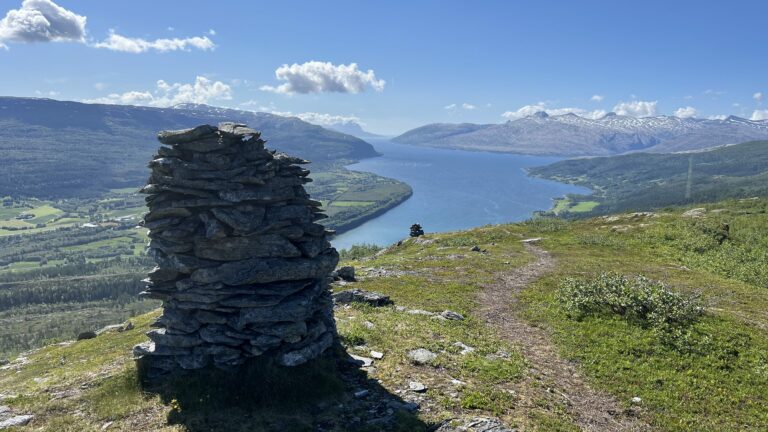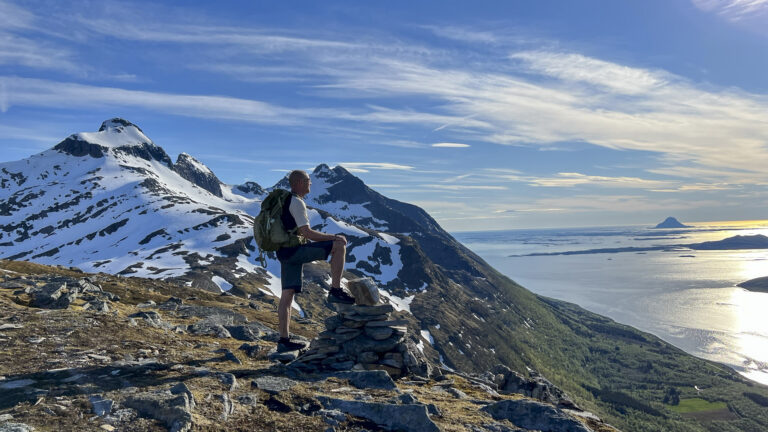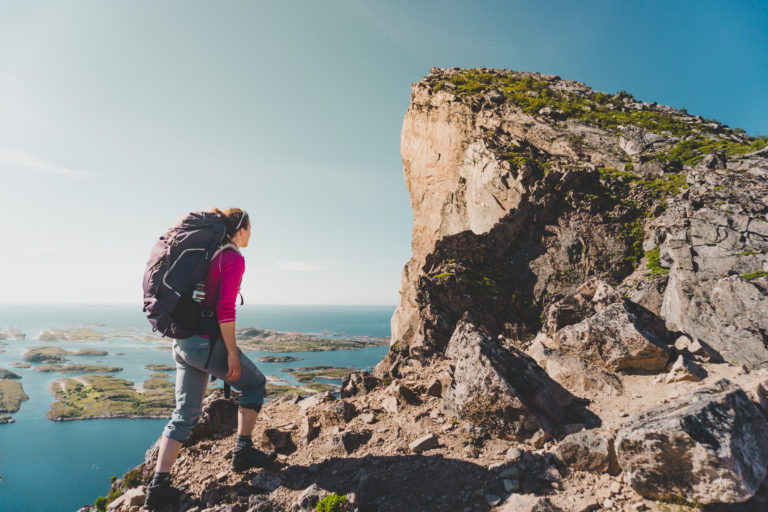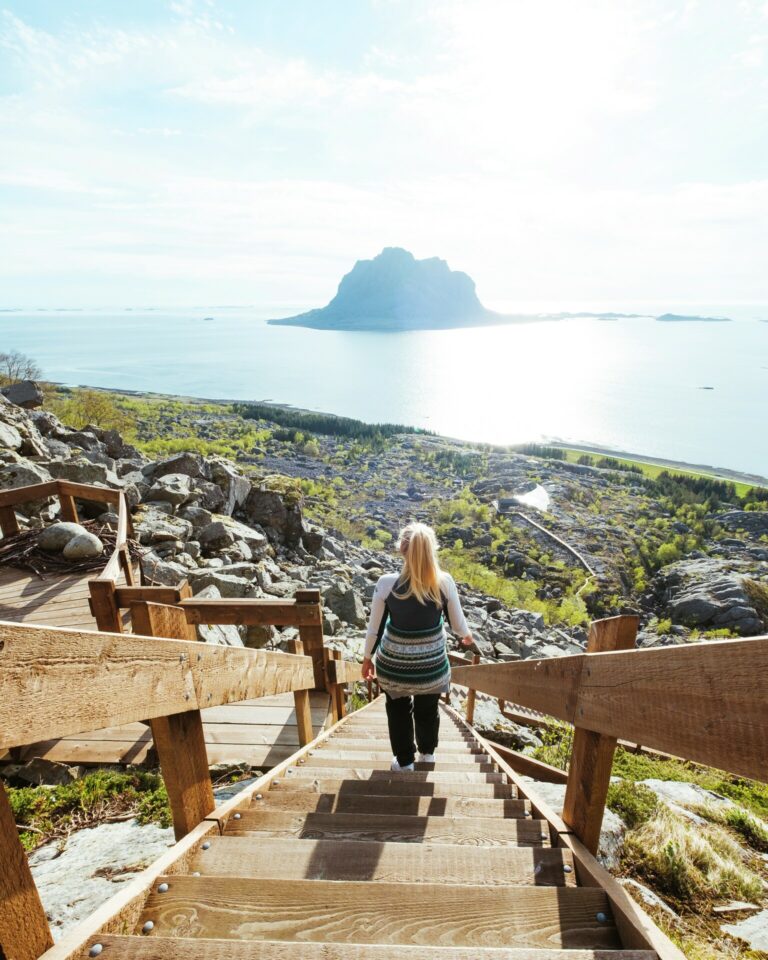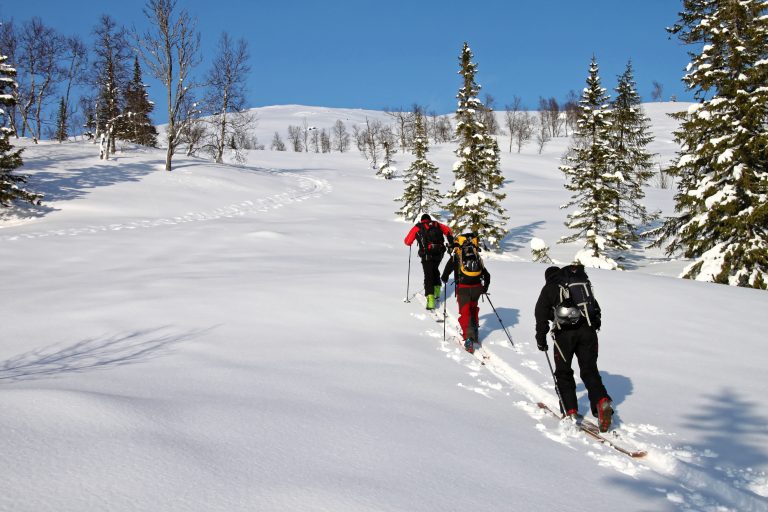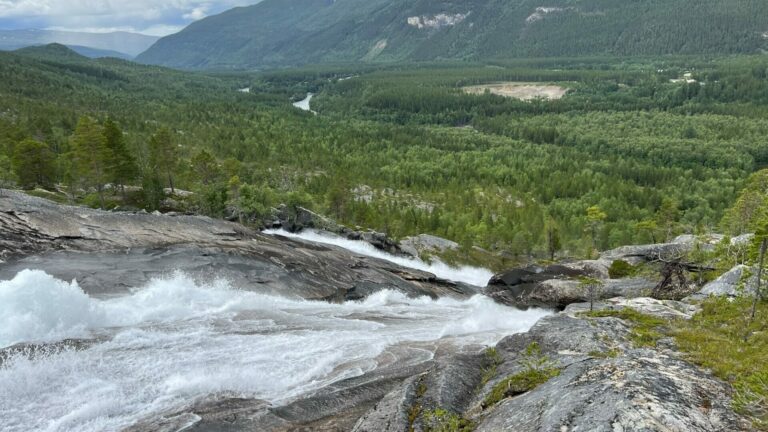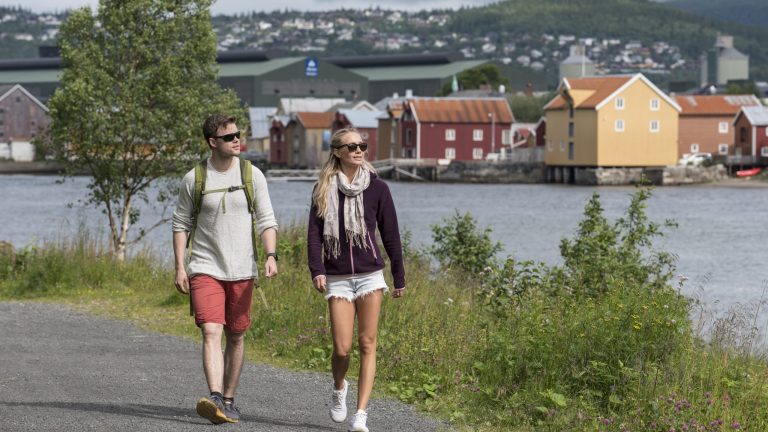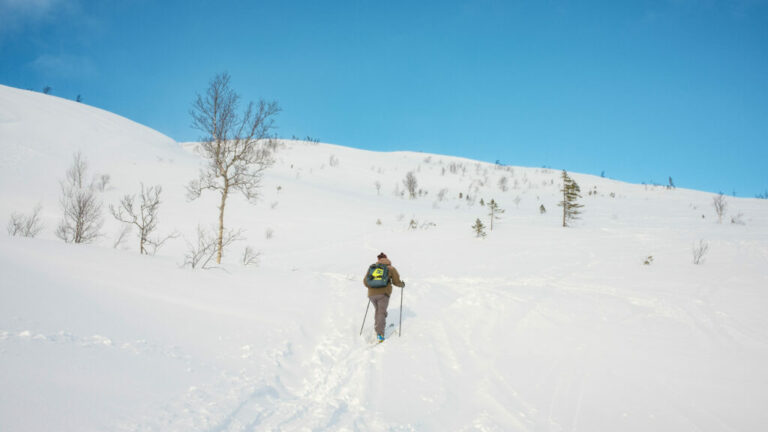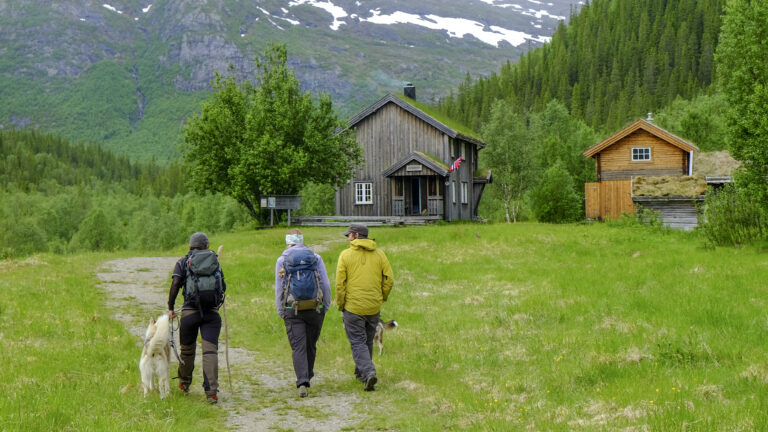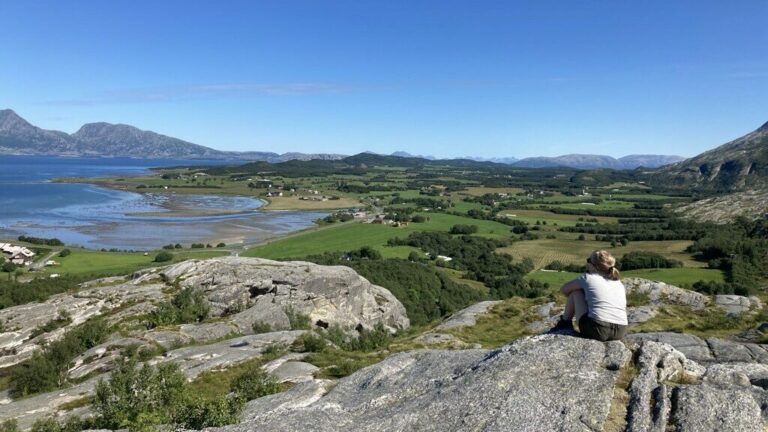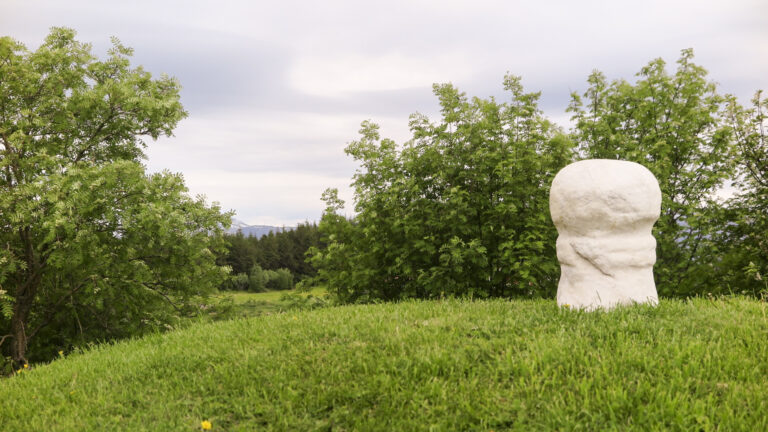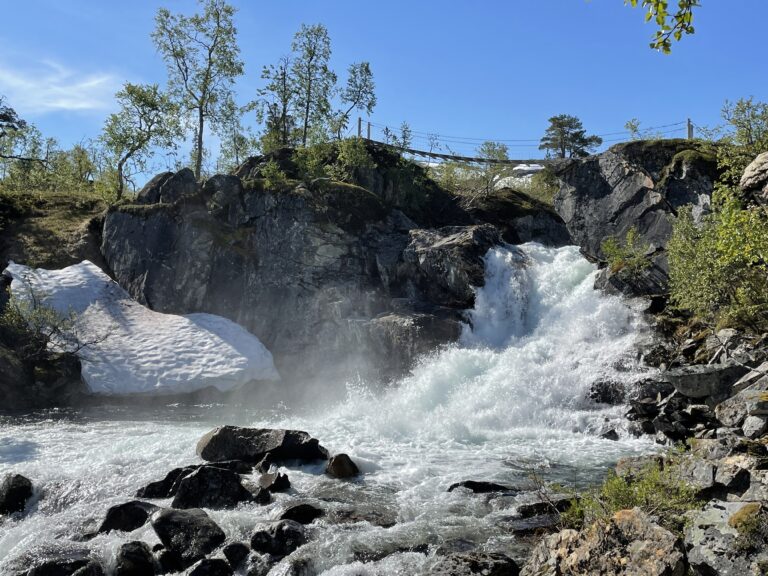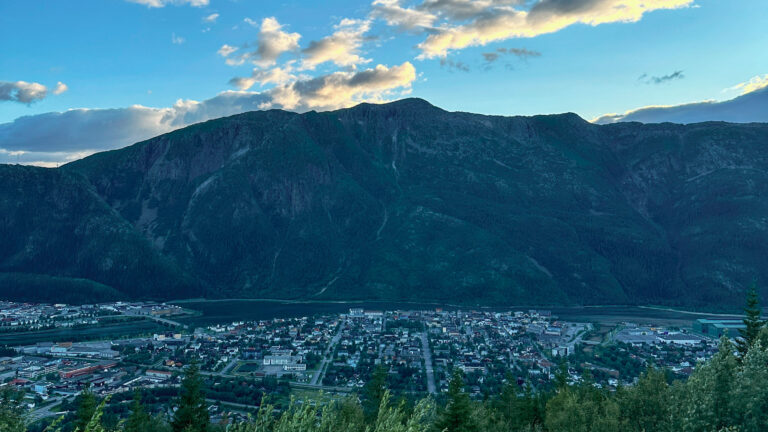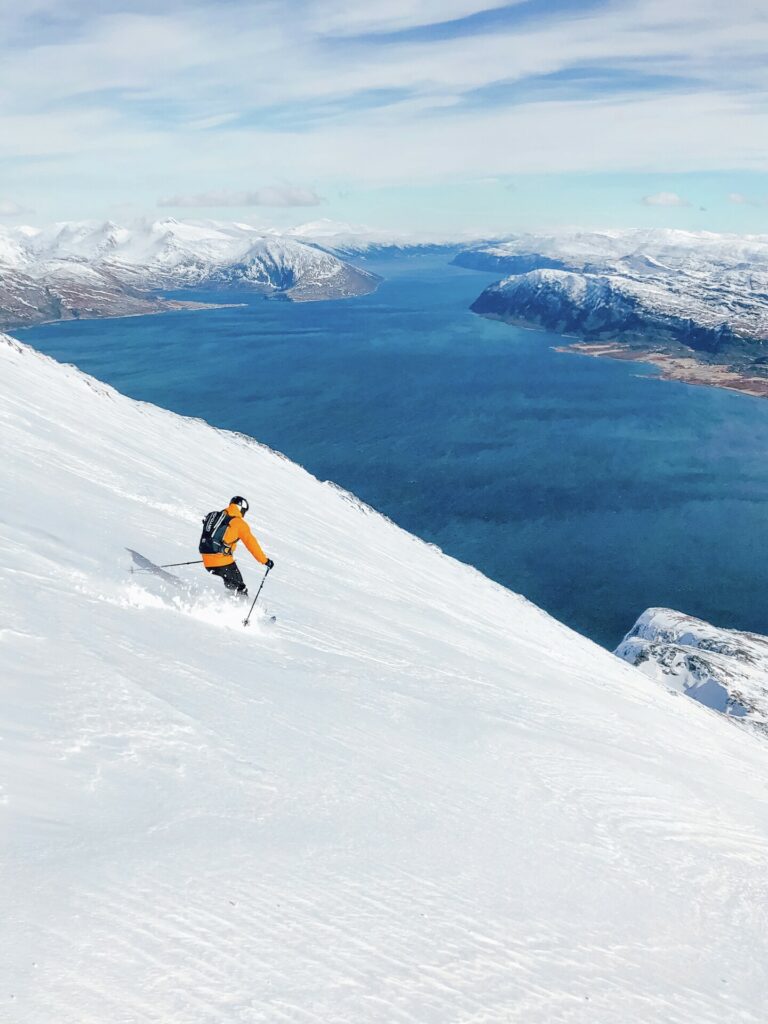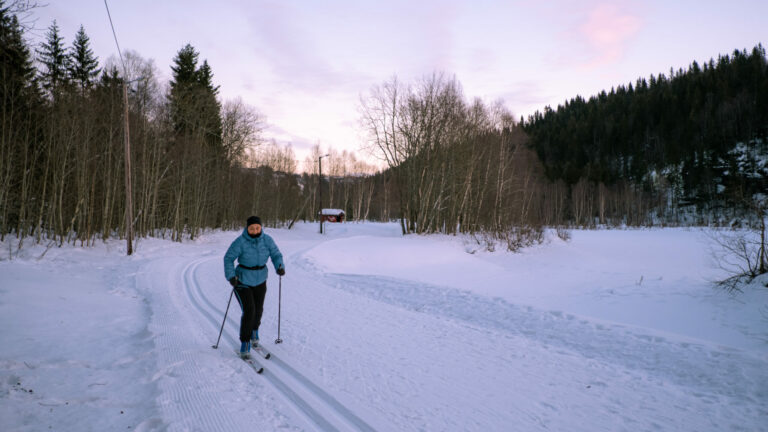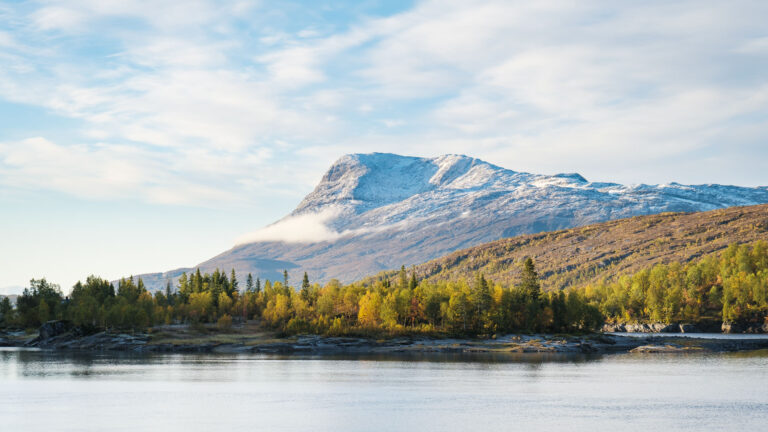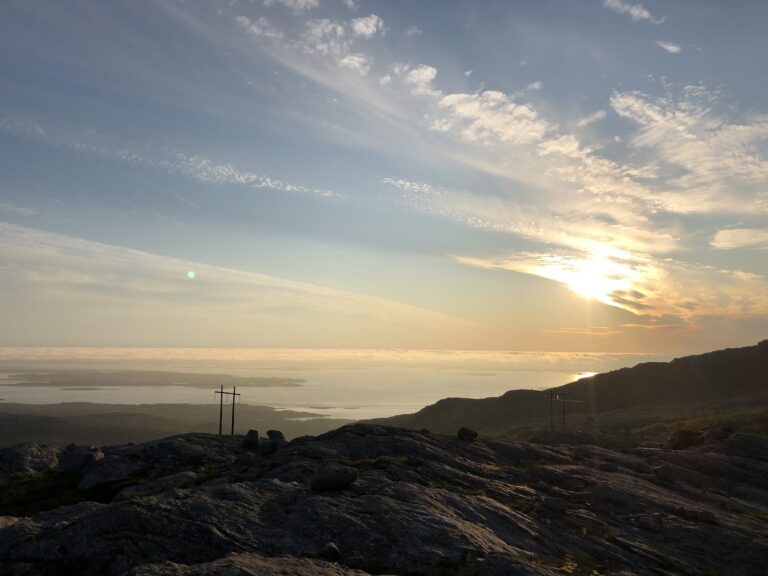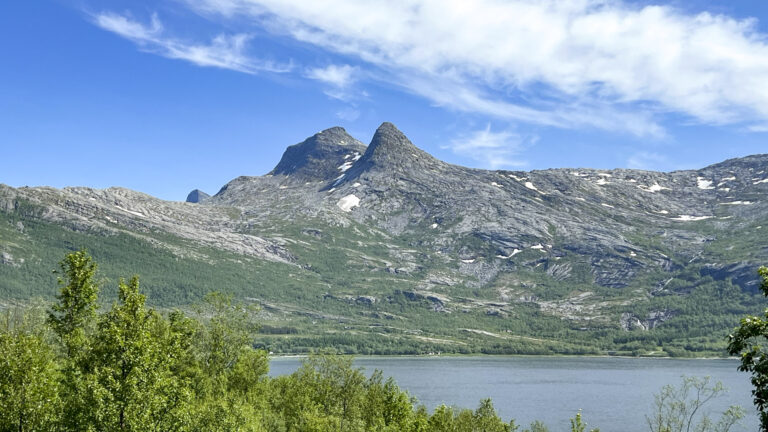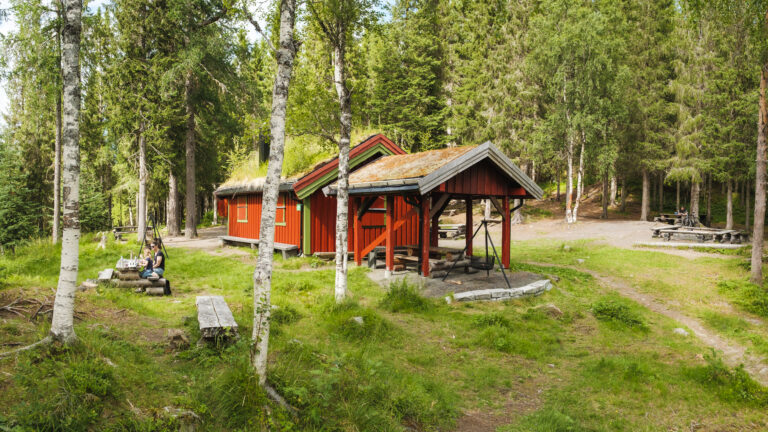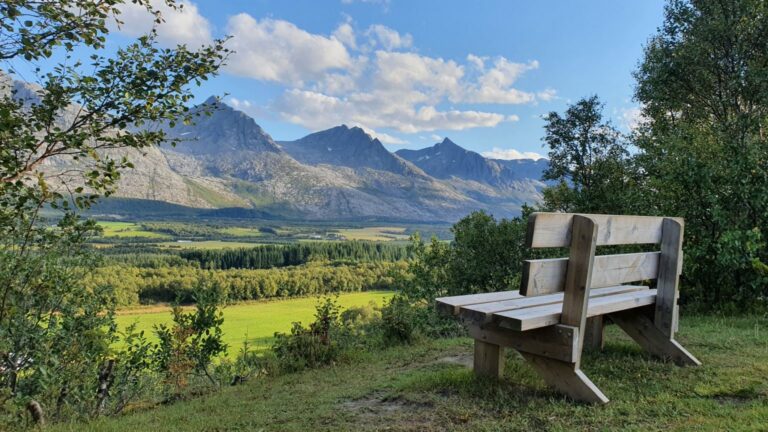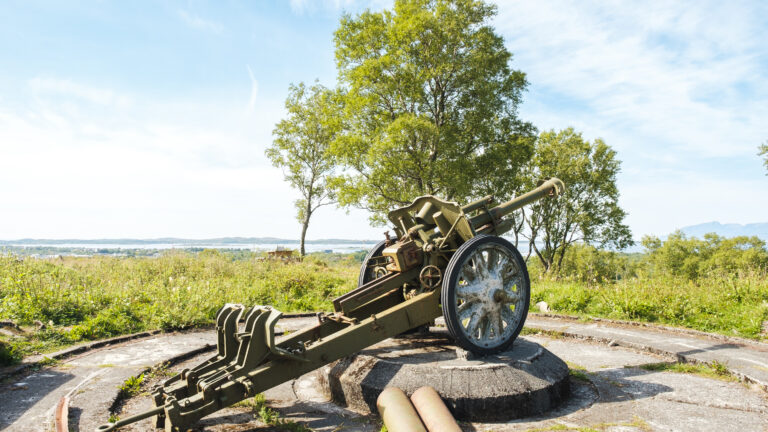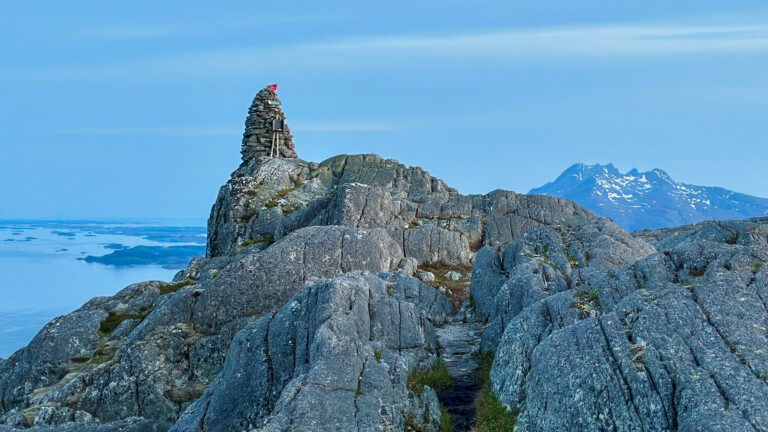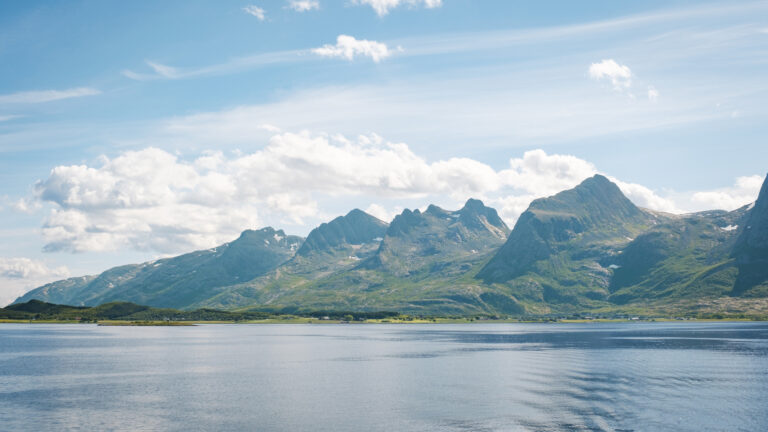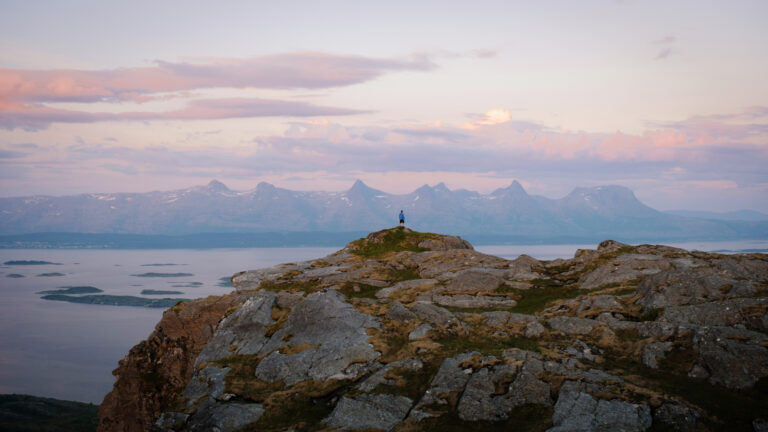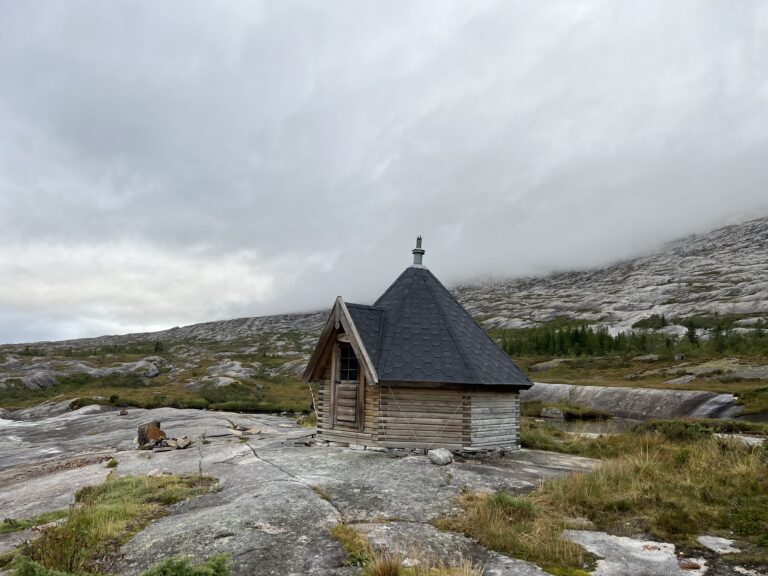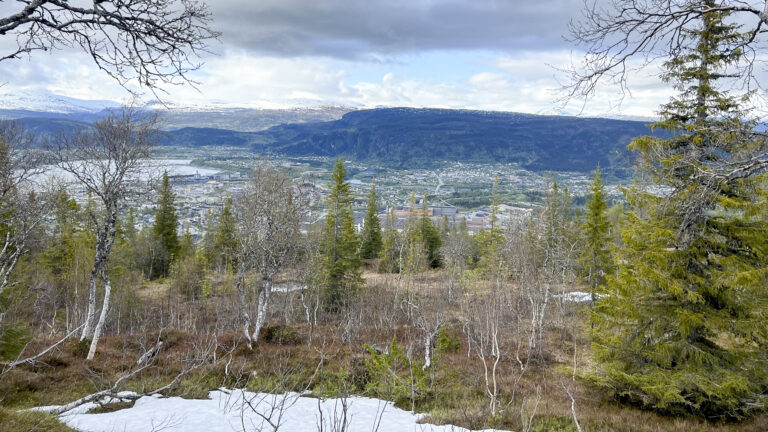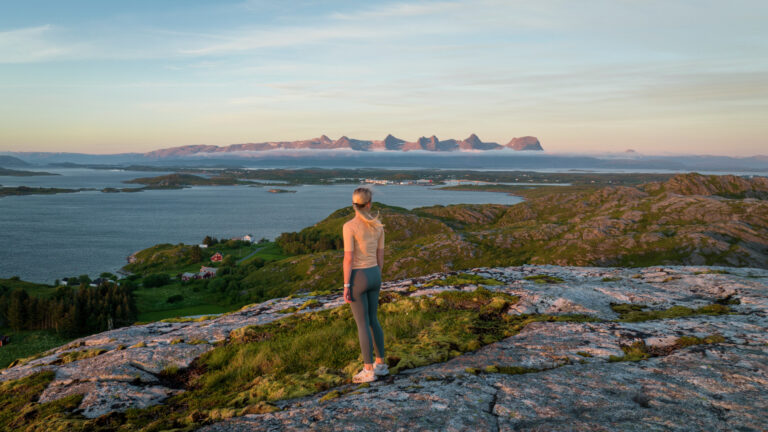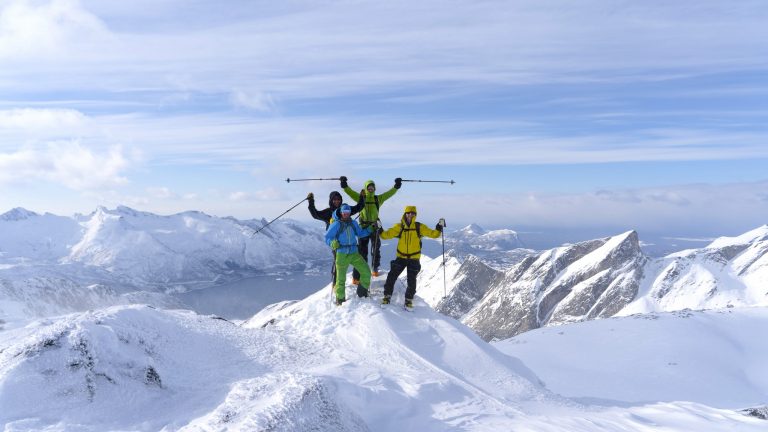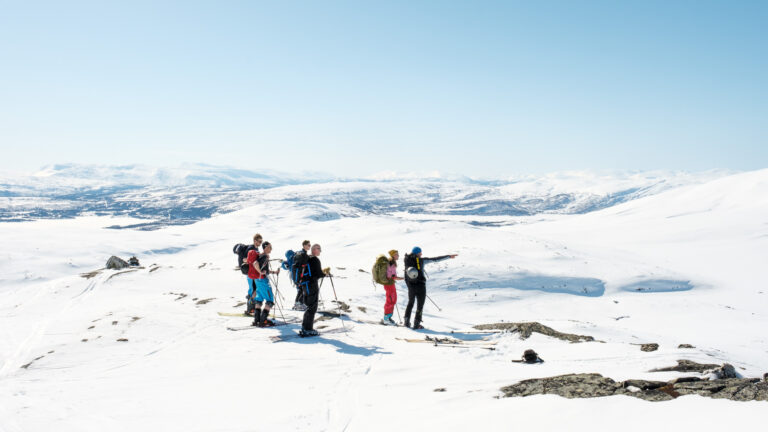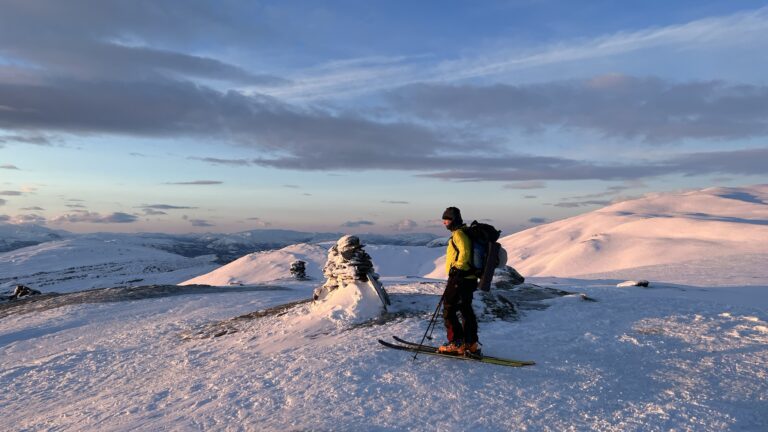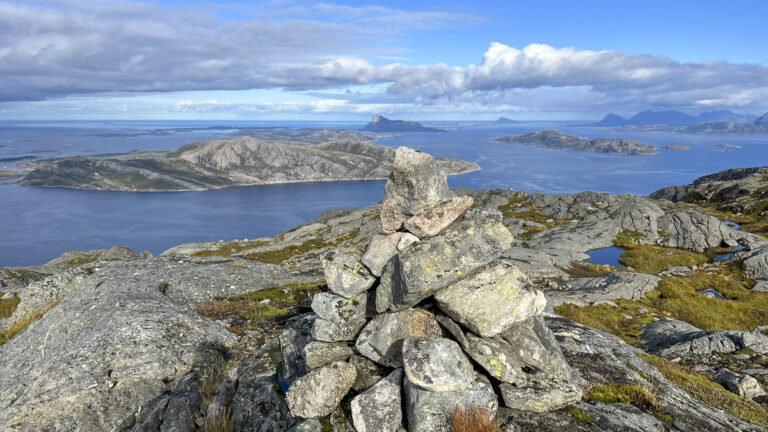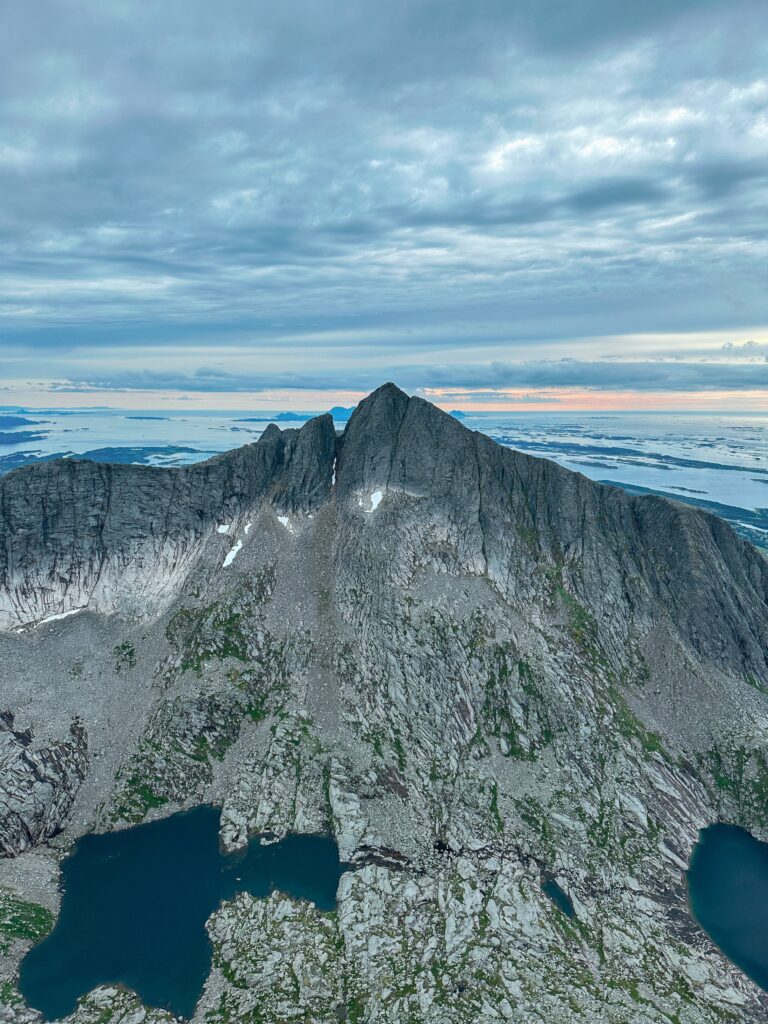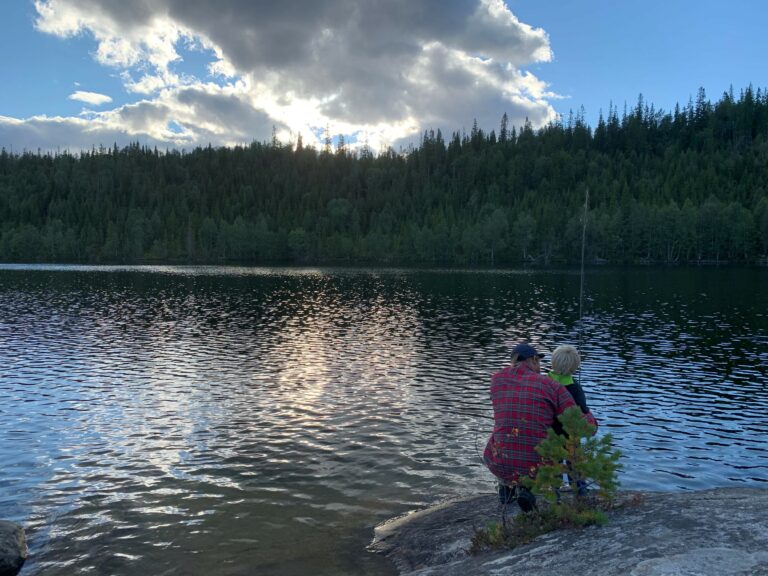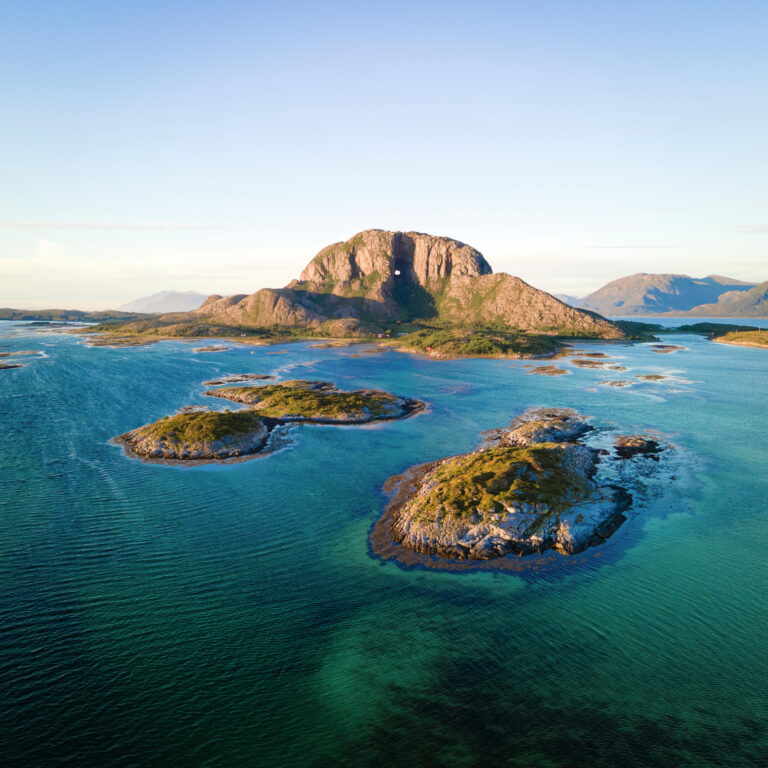A hiking adventure: Torghatten
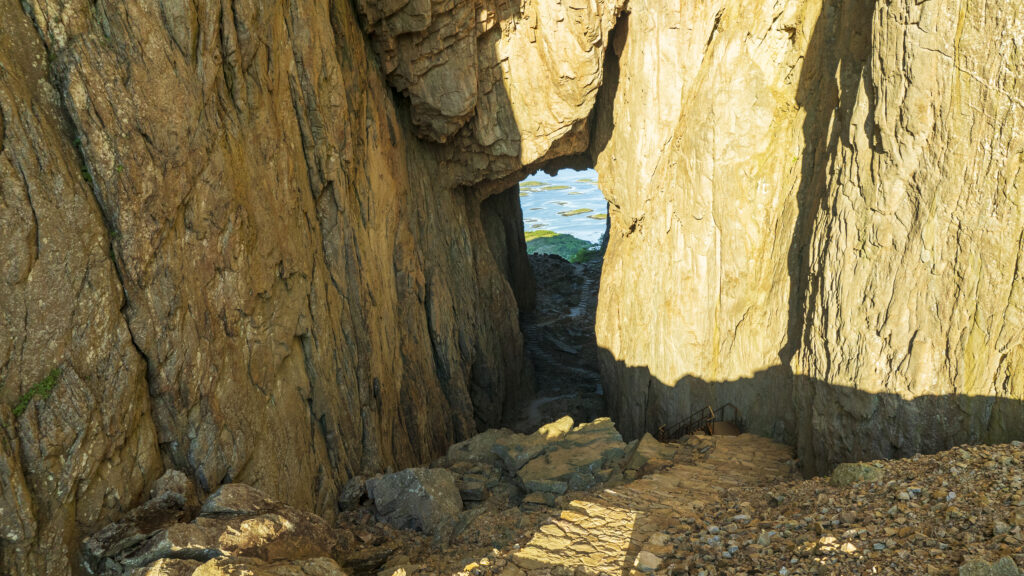 Kristoffer Møllevik / Visit Helgeland
Kristoffer Møllevik / Visit Helgeland
Torghatten is one of Helgeland’s most iconic mountains, with its striking hole right through the rock. The trail through the hole is a designated National Scenic Hike, carefully prepared with a Sherpa-built stone staircase and benches for a well-earned rest along the way.
Hike through Torghatten
Difficulty: Easy. It is a short hike to the opening in the mountain, and the trail is well-maintained.
Distance one way: About 2.8 kilometers
Elevation gain: About 100-meter elevation
Duration one way: 1 – 2 hours
Season: April to October
Trailhead: Parking lot on the southeast side of the mountain.
Find trailhead on Google Maps
Special Considerations: Due to the risk of ice and rock falls, it is not recommended to walk through the Torghatten hole from November to March.
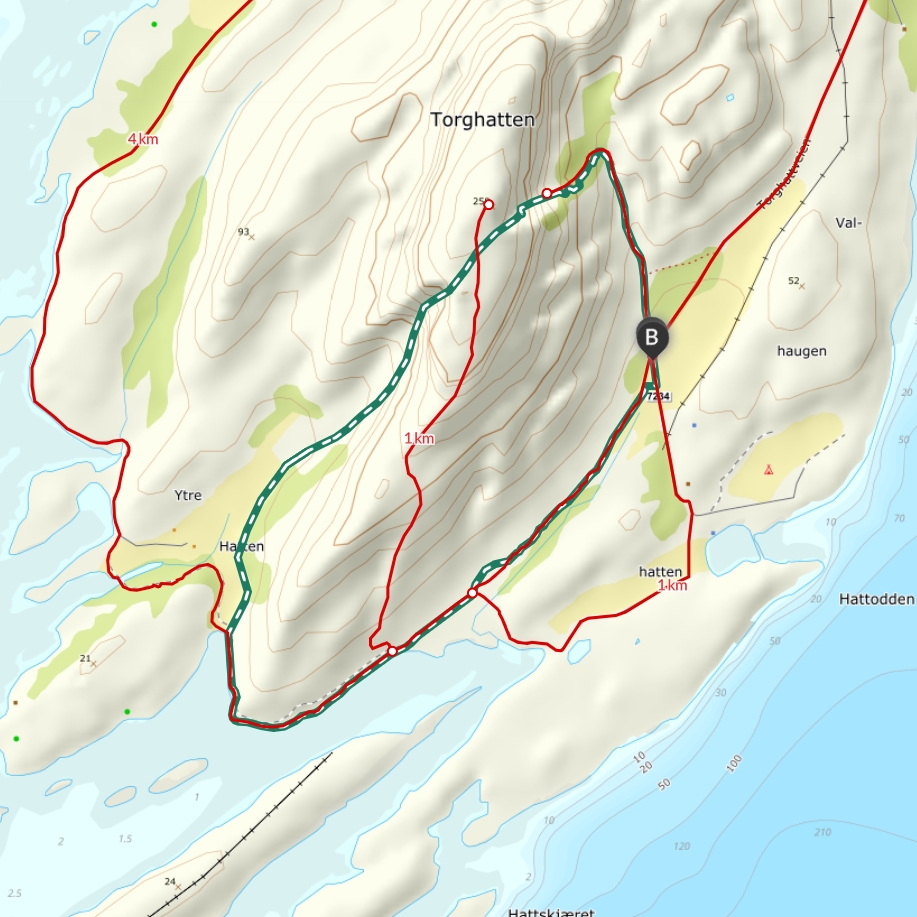 UT.no / Norgeskart
UT.no / NorgeskartPeople become small as they wander through the 160 meters long, 35 meters high, and 15-20 meters wide hole in Torghatten, which the sea carved out thousands of years ago. The trail up and through the mountain is well-maintained, with stone stairs both inside and on each side of the mountain. This is a hike suitable for both well-experienced preschoolers and active grandparents.
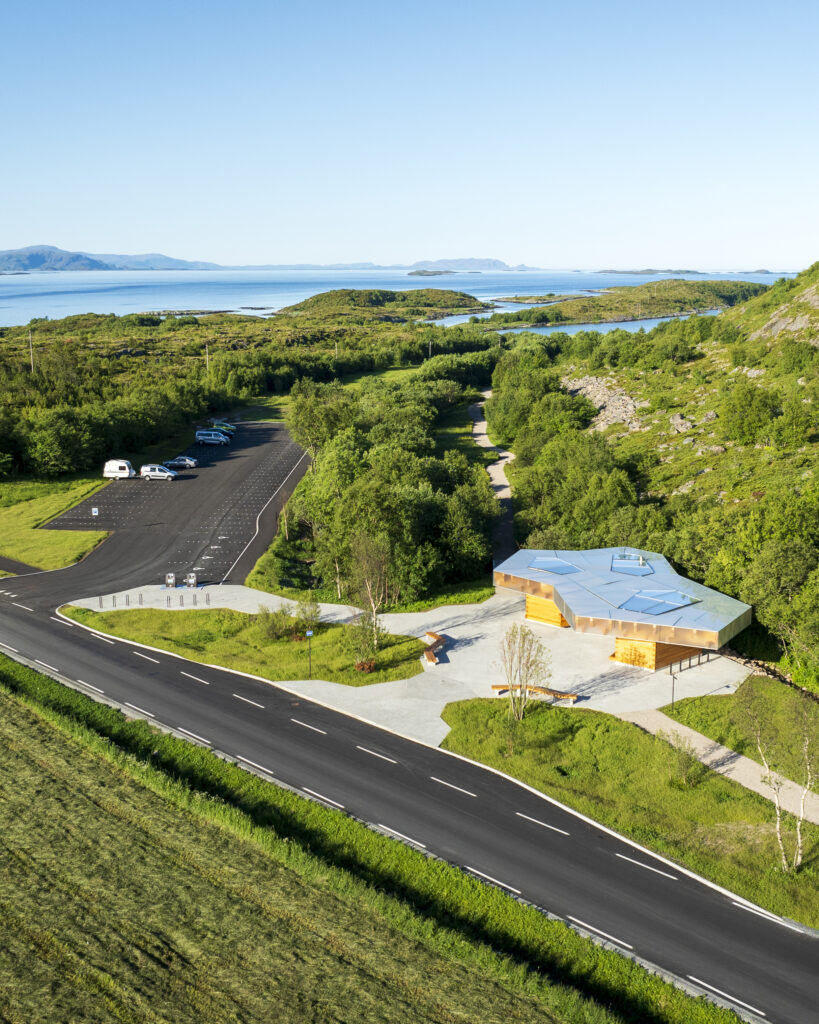 Det nye besøkssenteret ved Torghatten
Det nye besøkssenteret ved Torghatten
 Kristoffer Møllevik / Visit Helgeland
Kristoffer Møllevik / Visit Helgeland
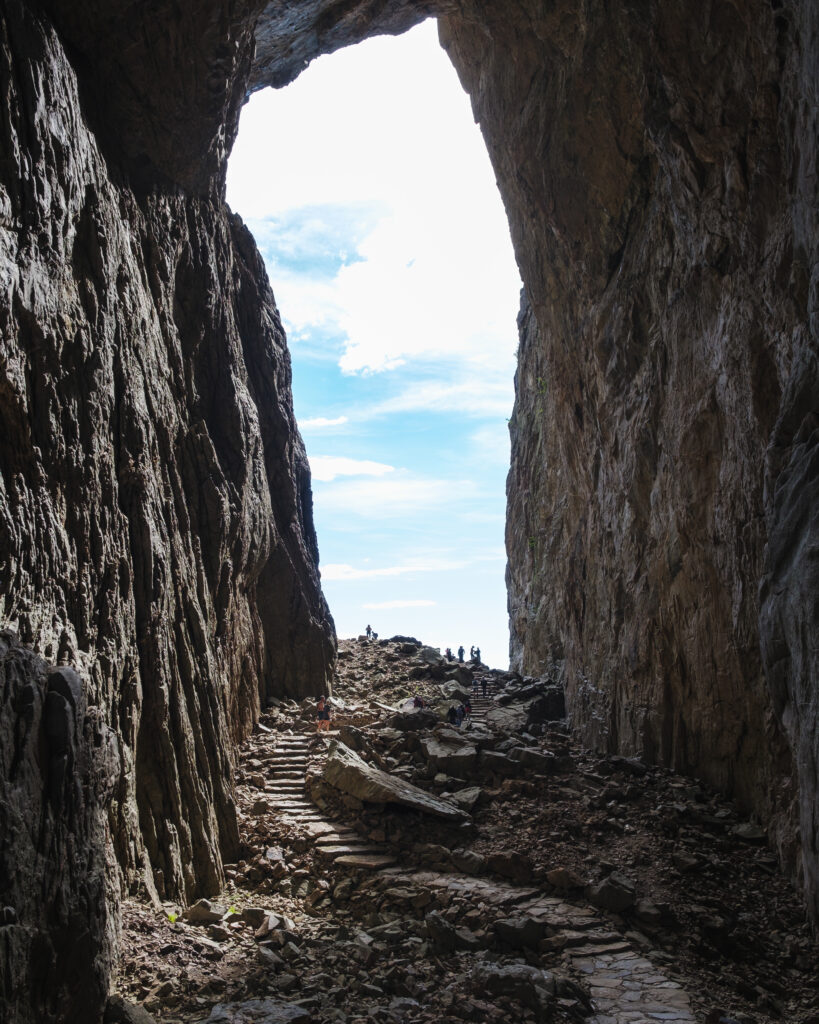 Kristoffer Møllevik / Visit Helgeland
Kristoffer Møllevik / Visit Helgeland
If you don’t want to go all the way around, it’s nice to just walk up to the hole on the east side and look through it from there. There, you’ll find a small plateau where you get a nice view of the islands and islets in the southwest. Even though the hike is well-maintained, we recommend hiking shoes.
Hike to the top of Torghatten
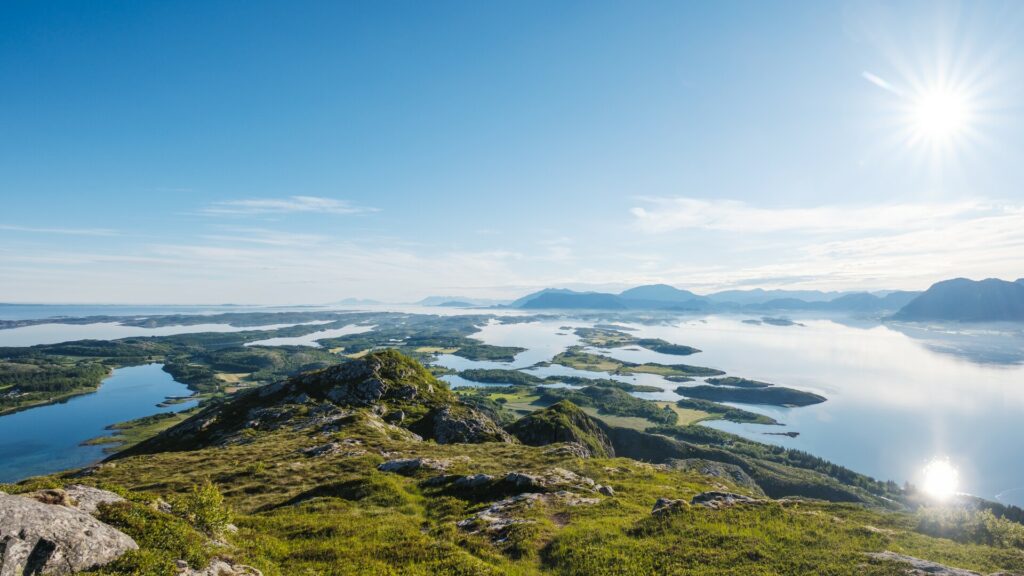 Kristoffer Møllevik / Visit Helgeland
Kristoffer Møllevik / Visit Helgeland
Difficulty: Challenging. The hike to the summit is short but challenging with steep ascents and exposed sections.
Distance one way: About 1,5 kilometers
Elevation gain: About 250-meter elevation
Duration one way: 45 – 90 minutes
Trailhead: Same parking lot as for the hike going through the mountain, on the southeast side of the mountain.
Click here for Google Maps
The hike to the top is short but relatively steep and somewhat airy, so it’s recommended to have sturdy hiking or mountain shoes. The journey to the summit begins gently on the beach flat at the base of the mountain. You start the ascent by a shallow chalk sand beach on the east side of the mountain.
As you progress higher, the surrounding coastal landscape unfolds. The final steep ascent might feel a bit airy, but if you’re being cautious of your surroundings, you can look forward to the magnificent panoramic view from the top.
1. Follow the Norwegian Mountain Code and plan according to your ability and equipment
Short hikes on easy terrain don’t require much. If you’re heading out for an hour or two in the lowlands and not gaining much elevation, you won’t need a lot of gear or be in top shape. If it gets cold or you get tired, you’re usually not far from your car.
But if you’re heading into more challenging terrain—steeper, rougher, and above the treeline where the weather is more unpredictable—you’ll need to be better prepared. You should plan the trip based on weather and conditions, be fit enough to complete it, and be ready for uneven ground, boulder fields, slippery roots, and stream crossings. That means carrying a heavier pack with extra clothes and gear, and wearing sturdy hiking boots that support your ankles.
If you’re unsure about taking on a demanding mountain hike, start with an easy or moderate one and see how it feels.
Learn more about the Norwegian Mountain Code at rodekors.no
See what you should bring on your hike on VisitNorway.com
2. Stick to marked trails
A shortcut through unfamiliar terrain can easily turn into a long and difficult detour. What looks like a trail might just be a sheep path that leads you somewhere completely unexpected. If you want the hike to be as easy or challenging—and as long or short—as planned, it’s best to follow marked trails.
If you’re heading off-trail, it’s smart to follow a GPS track. You can download a GPX file from a hike description and use it on a GPS device, a smartphone app, or a GPS watch.
UT.no and the UT app offer hike descriptions with GPS tracks. If your hike doesn’t have one, you can upload a track to ut.no/mine-turer and access it in the app. It’s free, but you’ll need to create an account.
Always carry a map and compass as backup.
UT app for Android / UT app for iPhone
3. Talk to locals or join a guided hike
Locals often have useful tips about your planned hike. They can tell you where to park, whether there’s phone coverage, if the trail is wet, if rivers are high, or suggest a better alternative. Talk to the people where you’re staying, at the local tourist office, or other hikers on the trail—you might get some truly valuable advice.
The best option is to hike with a guide. You can join a group tour or book a private guide. These are experienced locals who know the area well. They’ll help tailor the hike to your needs and share insights that add to the experience.
4. Look out for cultural landmarks
Even high up in the mountains, you’ll find traces of past human activity—some hundreds or even thousands of years old. These can include ancient trail markers, signal cairns, hunting fences, huts, and shepherd shelters. If you spot something interesting, check the KulturPunkt app to see what it is—or use the app to find a cultural site as your hiking goal.
KulturPunkt app for Android / KulturPunkt app for iPhone
KulturPunkt.org
5. Remember your responsibilities under the Right to Roam
Norway’s Right to Roam means you can hike, bike, pick berries, camp, fish, and ski almost anywhere in nature. But it also comes with responsibilities—what we call the “duties of the Right to Roam.” Leave no trace, respect wildlife, and know the rules for hunting, fishing, cycling, and access in protected areas like national parks and nature reserves.
Read more about the Right to Roam and your responsibilities at VisitNorway.com
Thank you for respecting the local communities, and for helping us preserve the natural beauty of Helgeland!
Please:
- Strive to leave no trace of your visit. Bring back all your rubbish, including used toilet paper, and discard it in the nearest rubbish bin.
- Plan your toilet visits and use the opportunity when you pass a toilet. In the wilderness, make sure you are not a nuisance to others.
- Respect the local wildlife. Keep a good distance from wildlife, livestock and birds. Keep your dog leashed.
- Respect private property. Keep a respectful distance from houses and cabins.
- Show good boating sense. Keep a good distance from shore and drive at a low speed, especially when you are close to anyone or anything on the water, including birds or animals. Avoid loud and disturbing engine noise. Be aware that some islands and nature reserves are important nesting sites, and that going ashore is prohibited during the nesting season.
- Follow the Norwegian Mountain Code (Fjellvettreglene). Plan your excursion according to the weather forecast, your skills and experience.
- Join a guided excursion or consider hiring an experienced guide, especially when you don’t have sufficient experience or knowledge to guarantee a safe trip.
Find accommadation, food and activities close by

Audio guide Brønnøysund – a walk through 10,000 years of history
Brønnøysund is more than a beautiful coastal town – it’s a living map of history, with traces of people, trade, and life along the coast over 10,000 years. This audio guide lets you explore the town’s rich past and present at your own pace, right in the heart of a landscape scattered with thousands of islands, islets, and skerries.
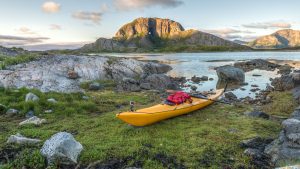
Brønnøysund Kajakk- courses and rental of kayaks, SUPs, and boats
Brønnøysund Kajakk has everything you need to explore the beautiful sea areas and islands around Brønnøysund, whether you want to do it with a kayak, SUP, or boat.
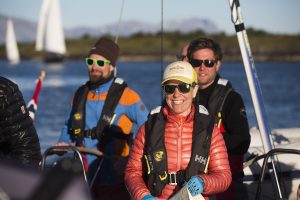
Seil Norge – Sailing adventures on the Helgeland coast
SeilNorge is the country’s leading organizer of sailing tours, expeditions, and sailing courses. Join them for an active holiday week up and down along Norway’s most beautiful coastline; the Helgeland coast. Set against a backdrop of thousands of islands, islets, and skerries, you will learn the art of sailing, whether you are a beginner or experienced sailor.
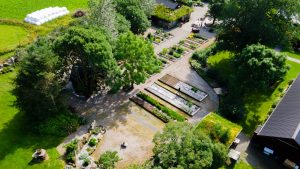
Hildurs Urterarium – Culinary adventures
Hildurs Urterarium is far more than a restaurant. It is a lush oasis imbued with life and personality, offering guests a respite from their busy lives and a unique dining experience shared with friends or family. Restaurant Sagastuen and the old parlour have an ambience that gives visitors a taste of bygone times.

KRED Pub & Café in Brønnøysund
This is the most popular venue for local musicians as well as established artists. The pub has a big-city feel to it, and when you’re hungry, the chef offers tasty dishes. KRED is also popular as a stand-up stage, the place to watch the football game, and for its Quiz Evenings.
